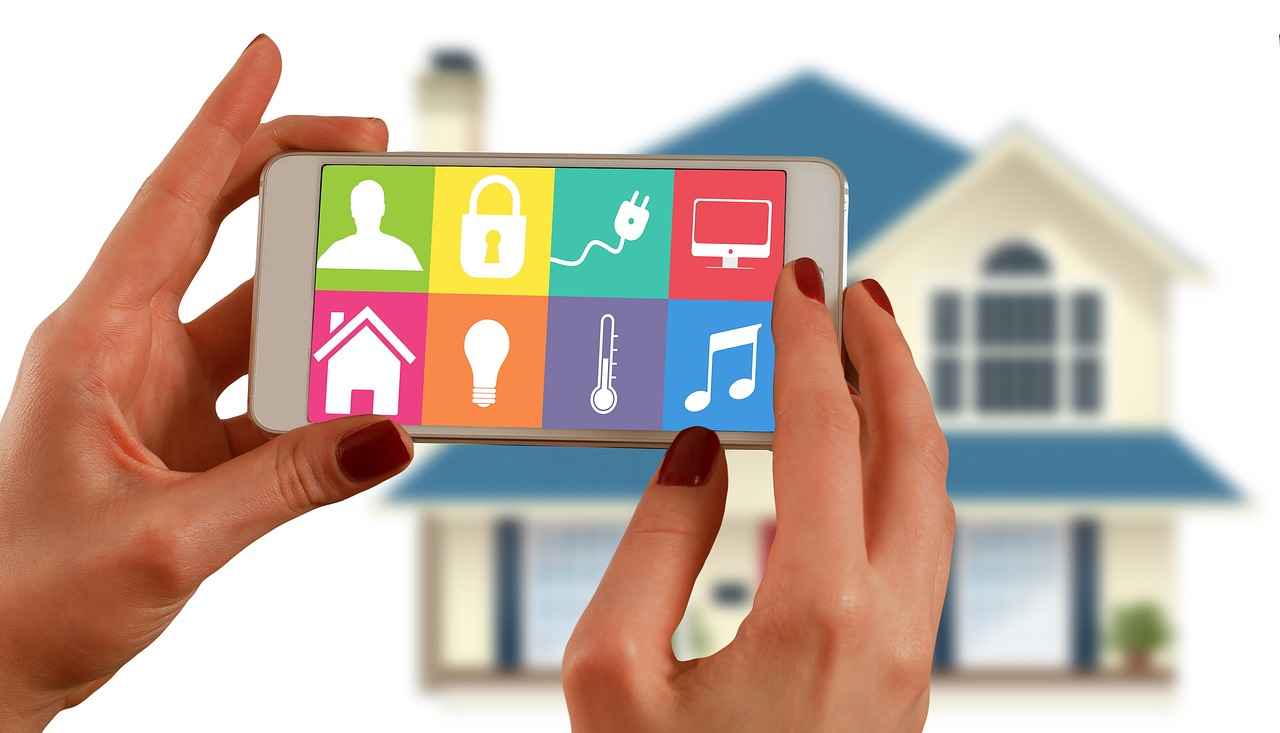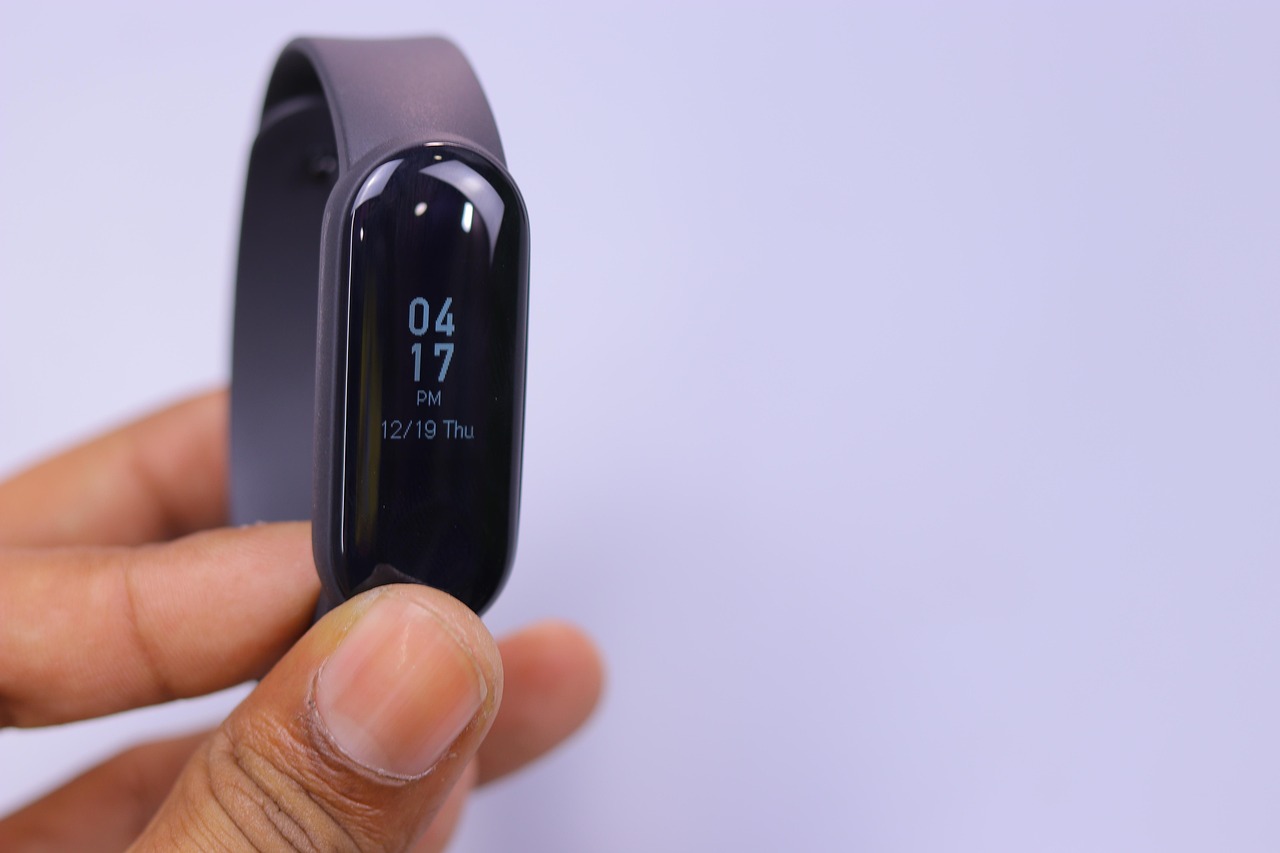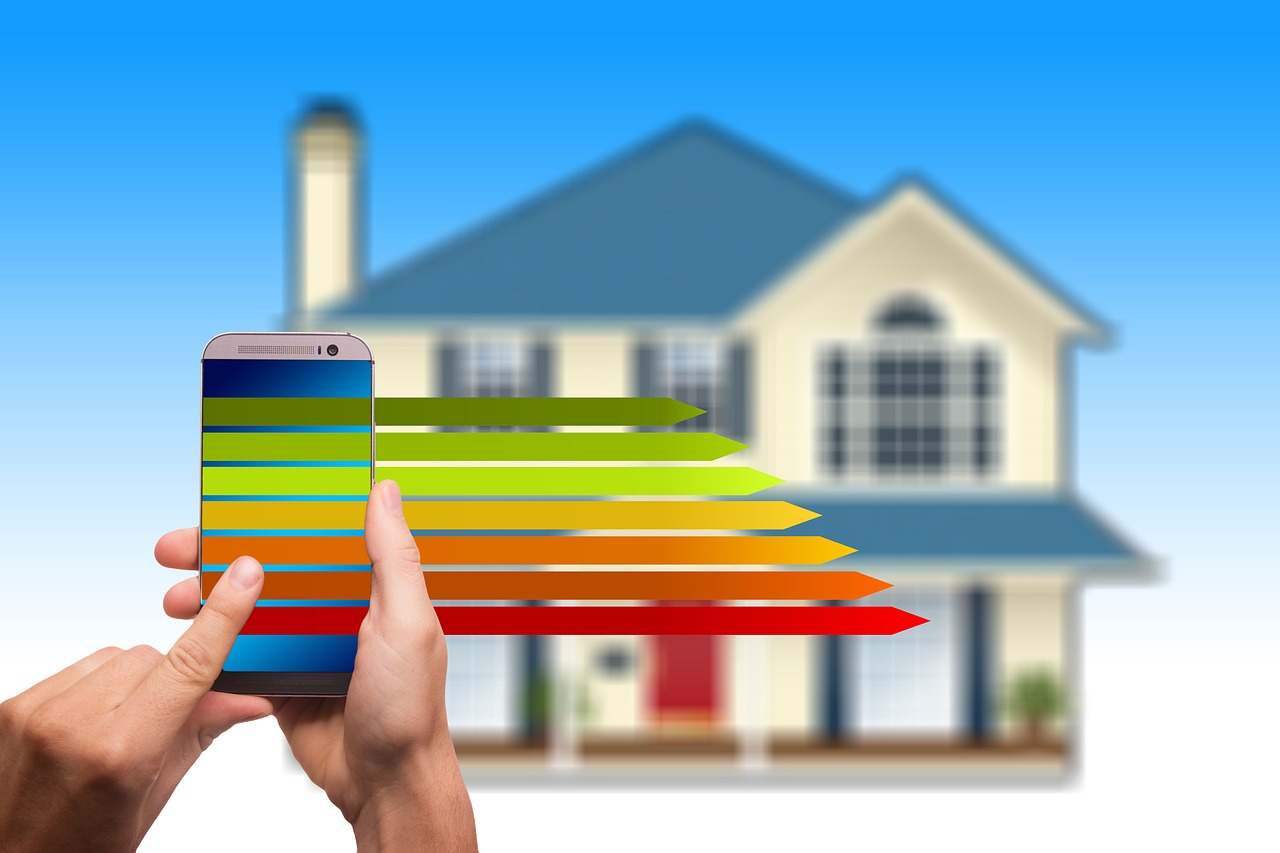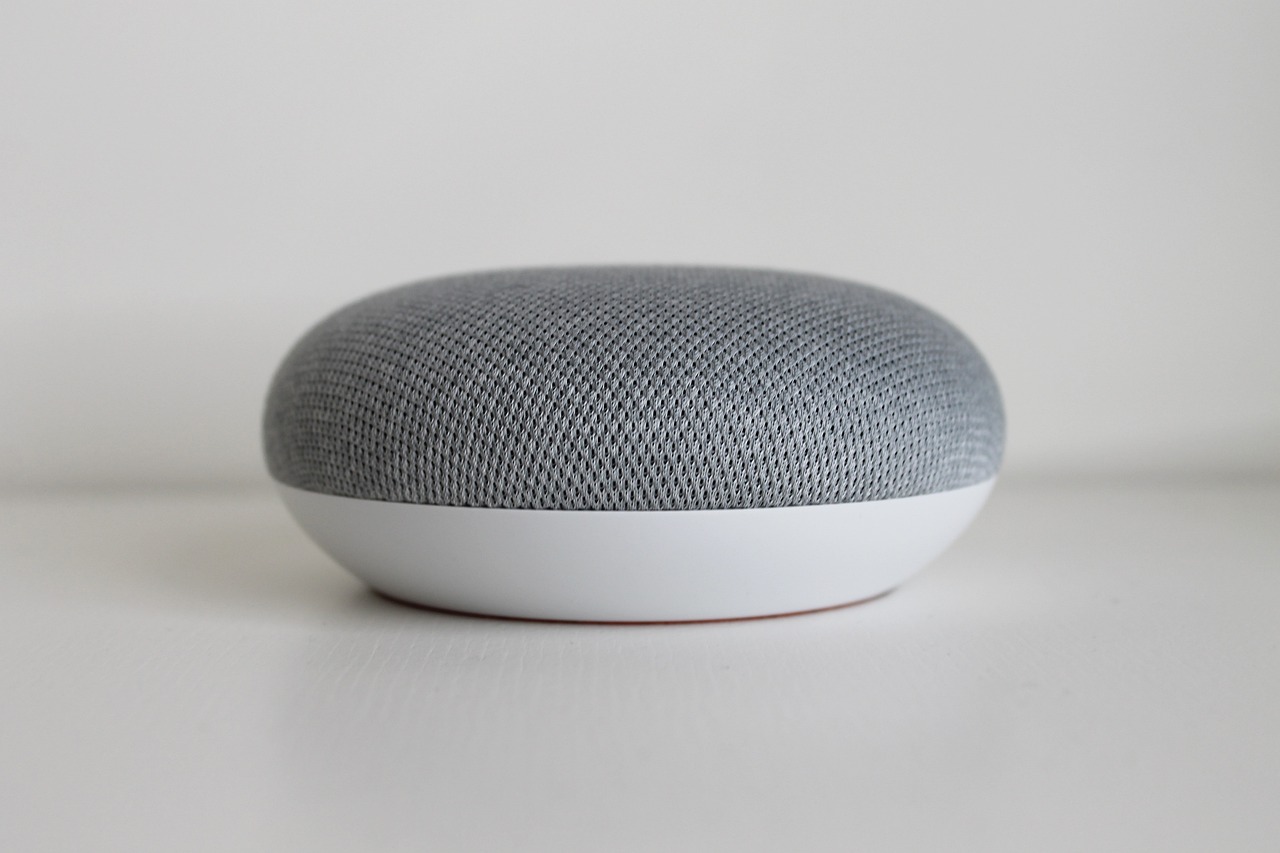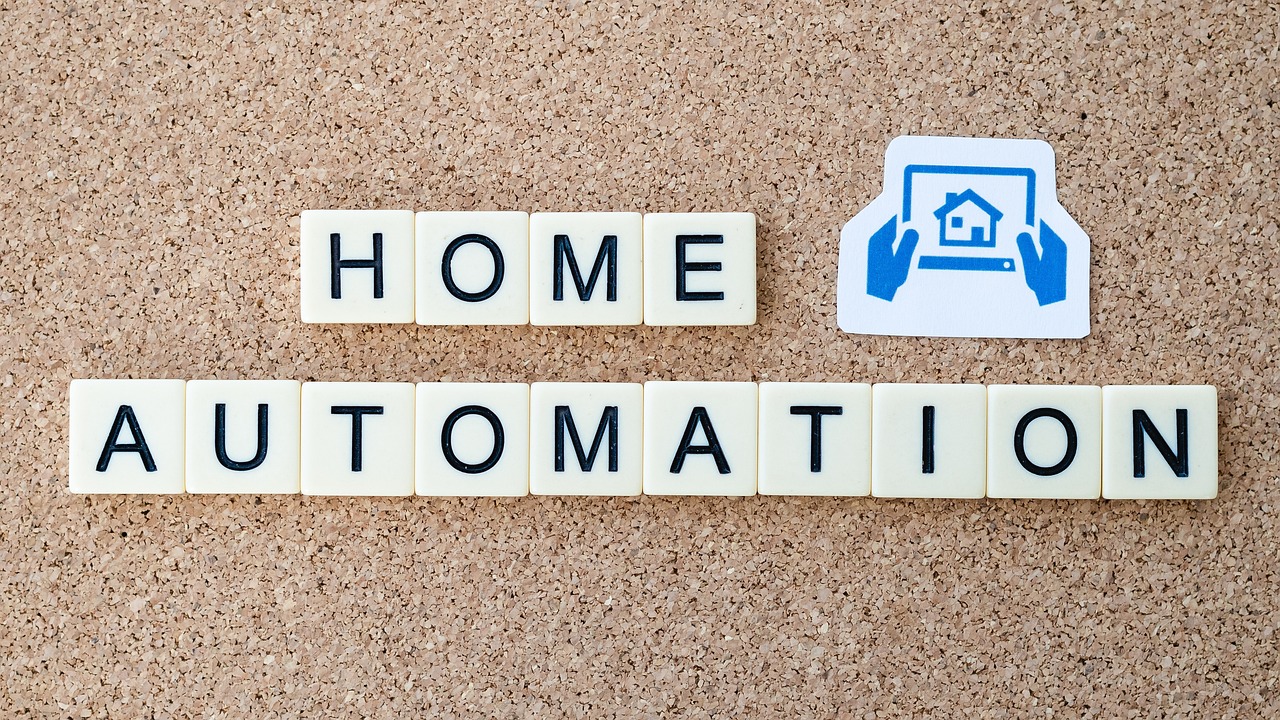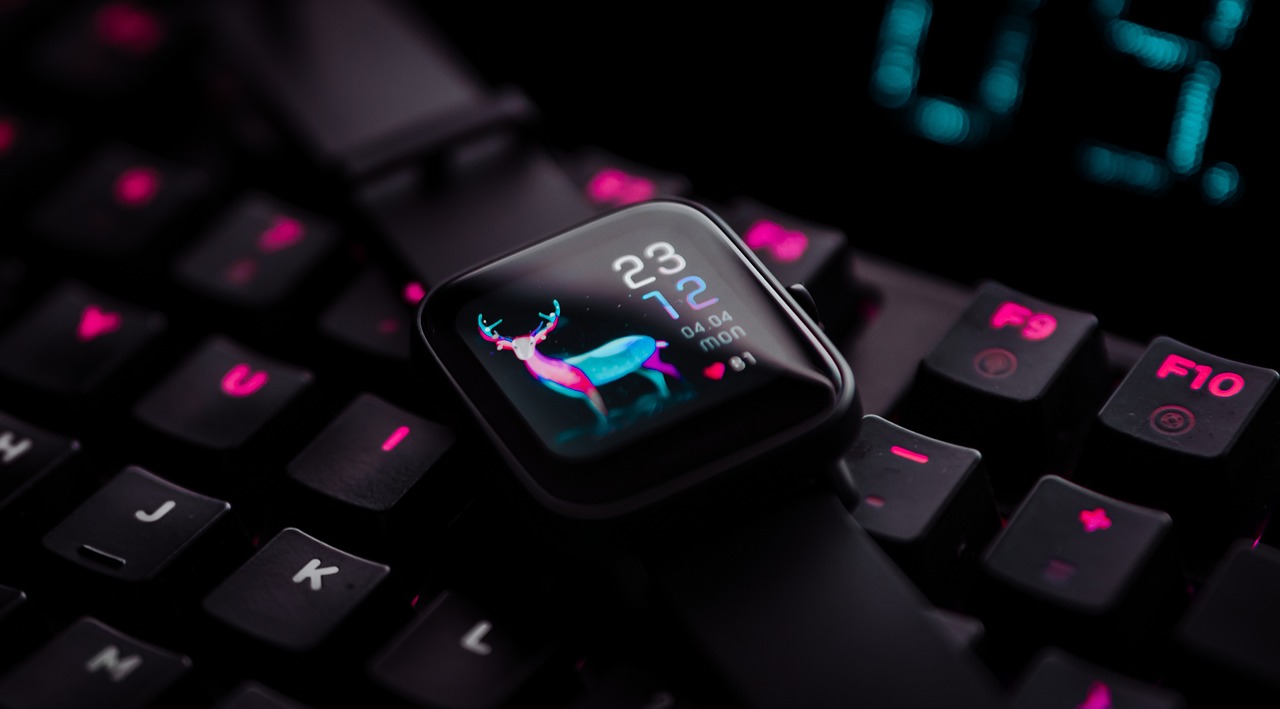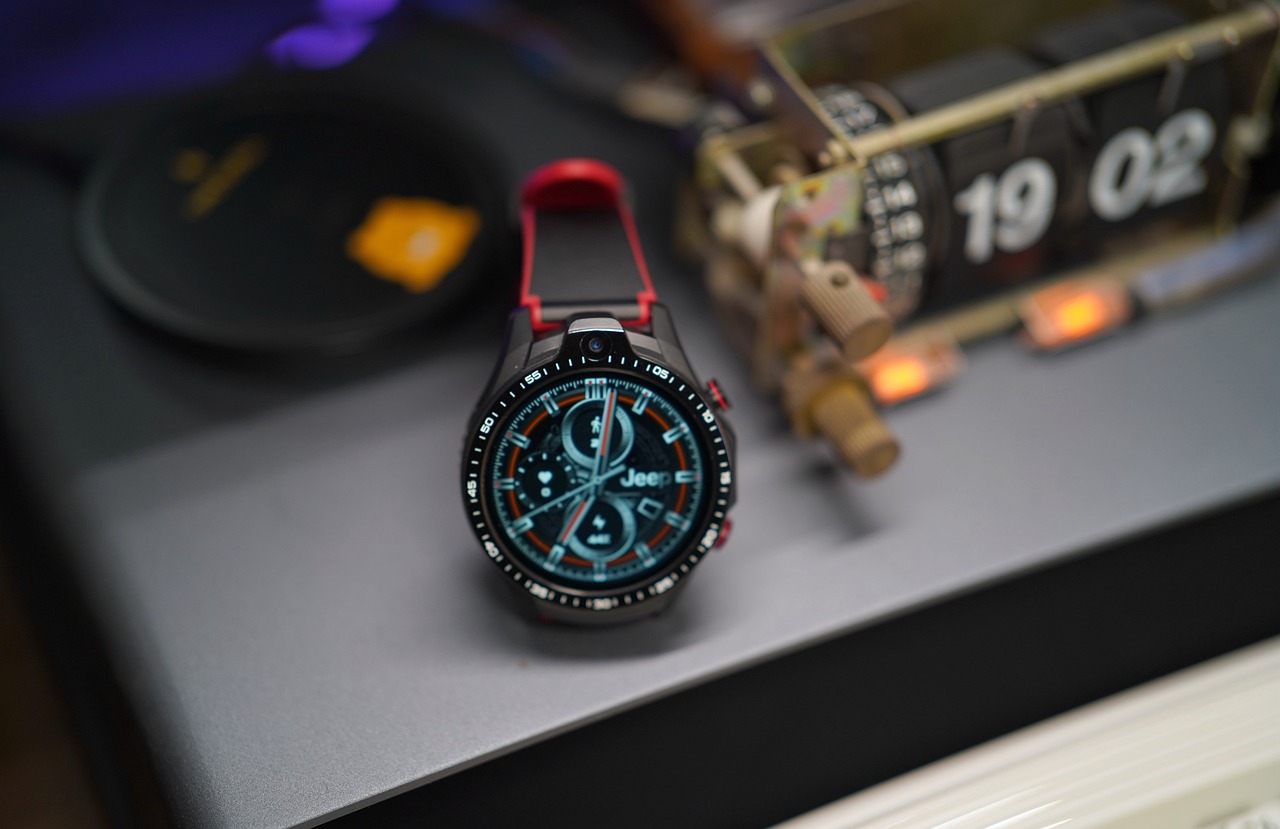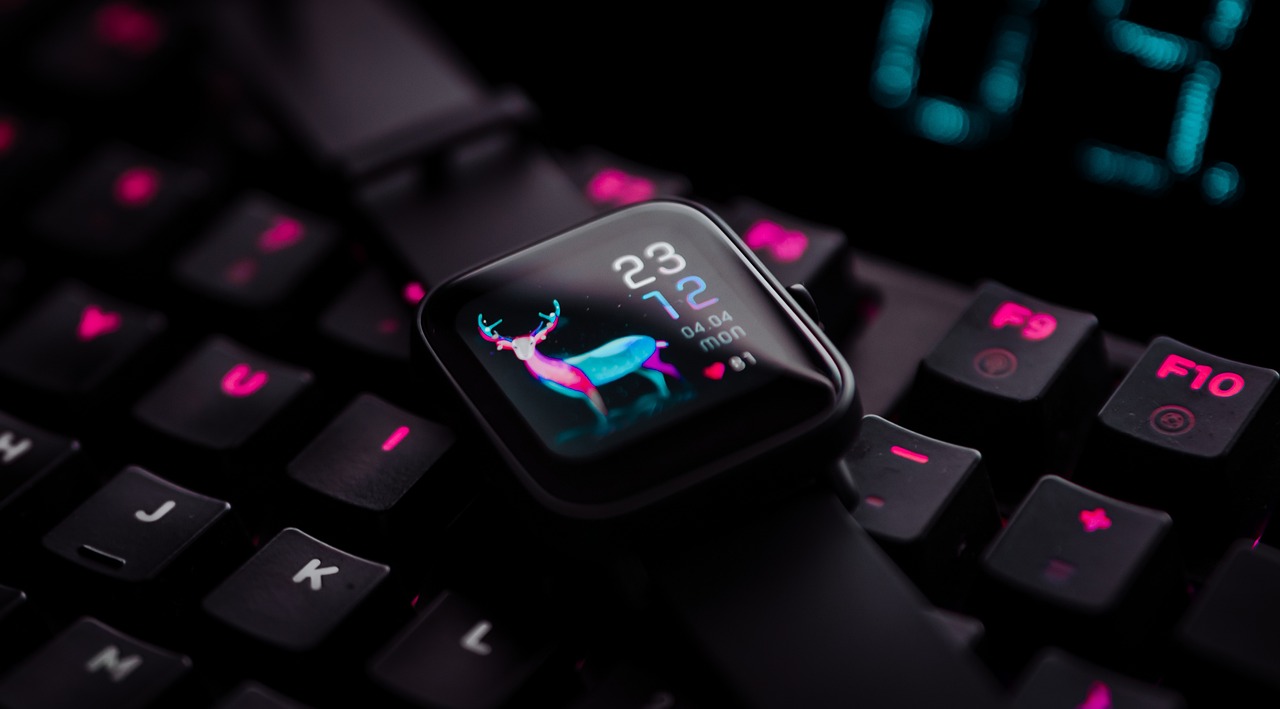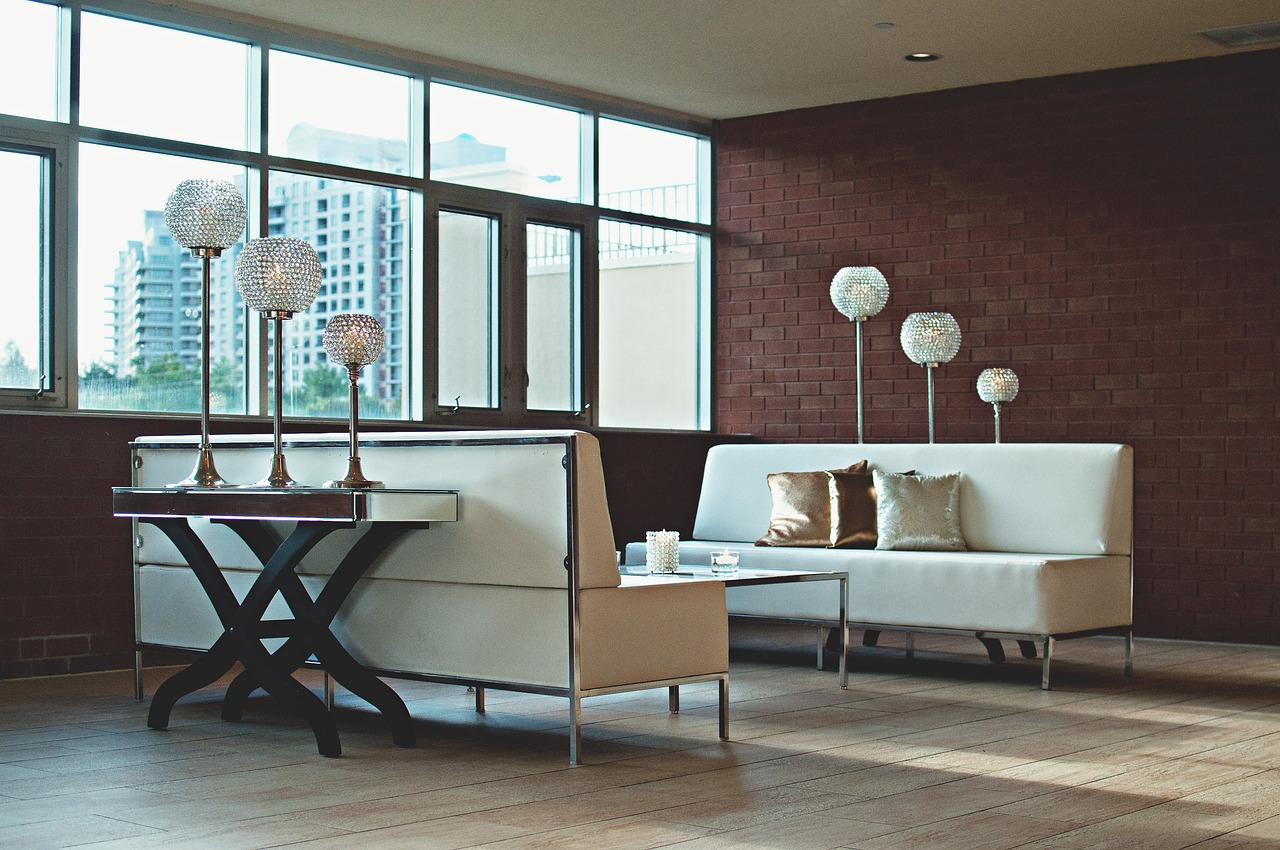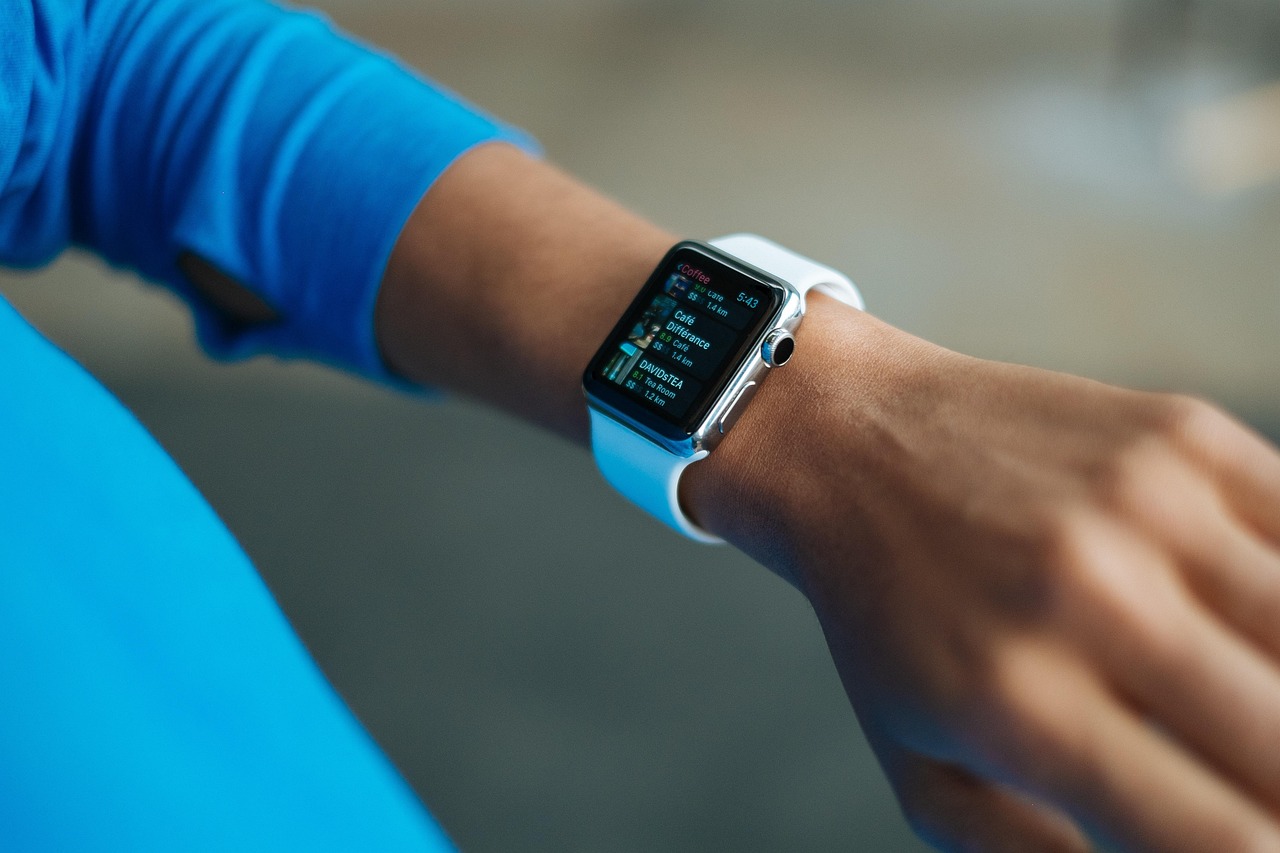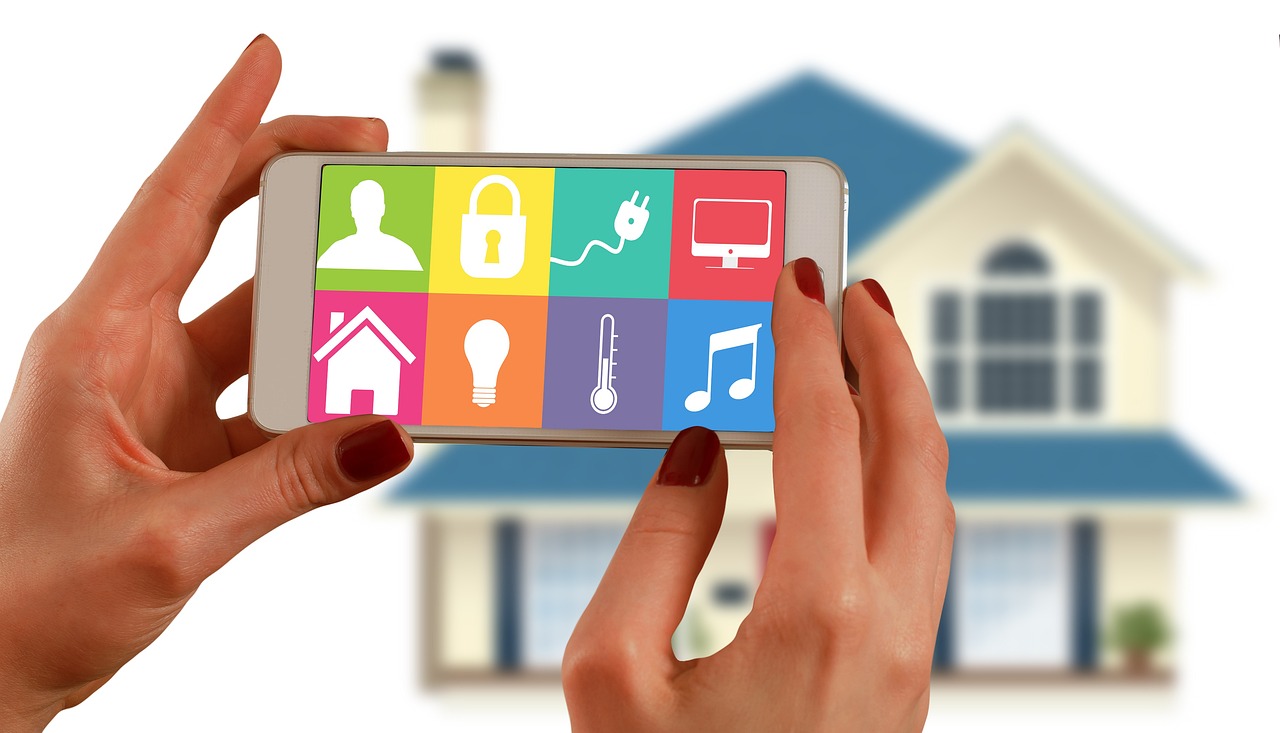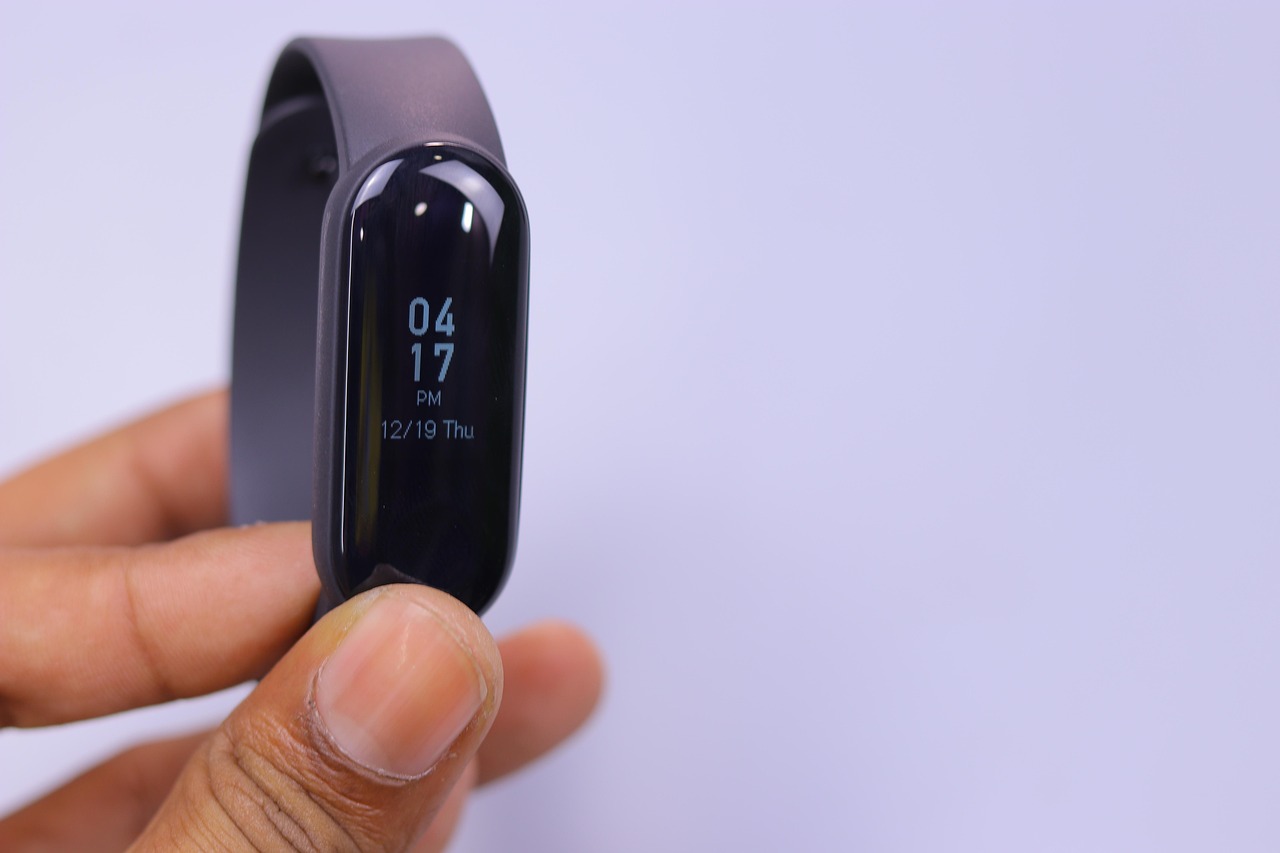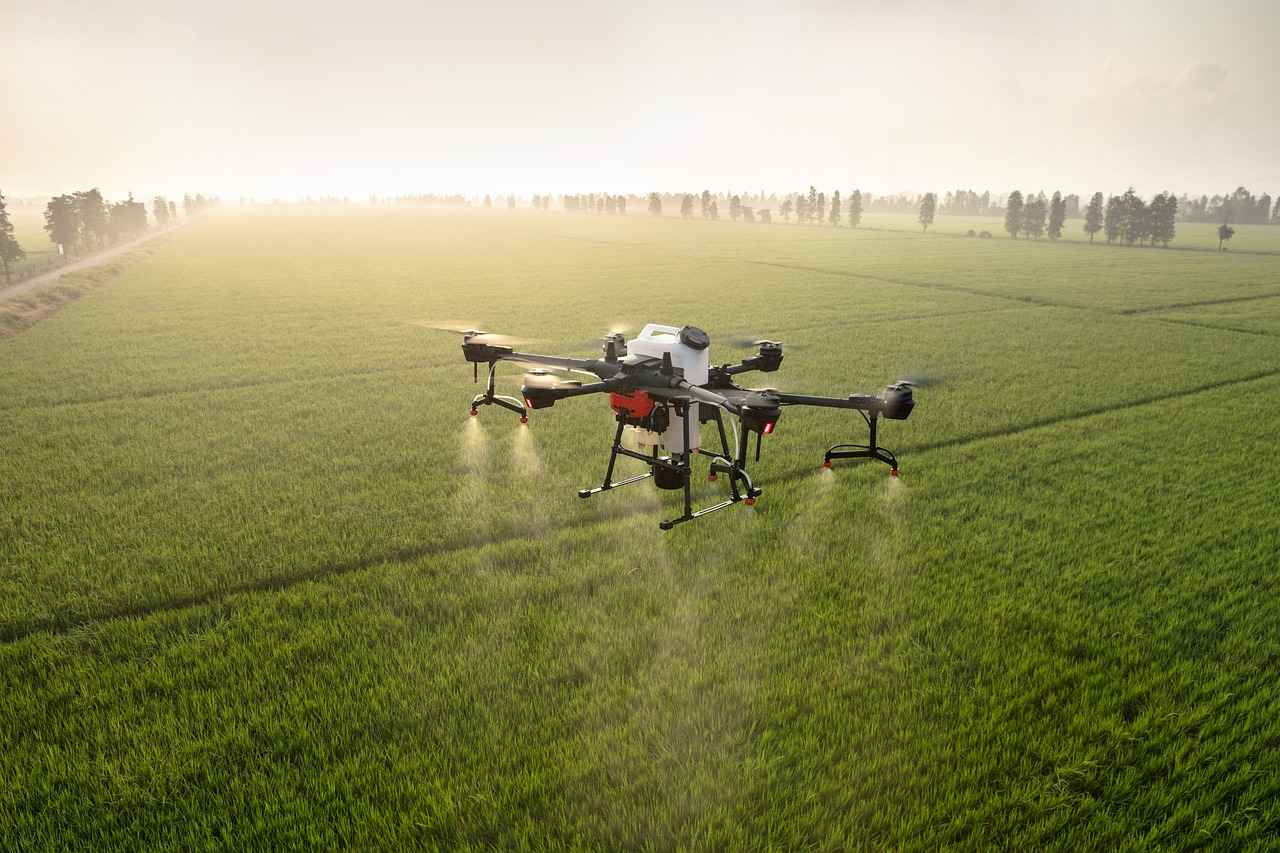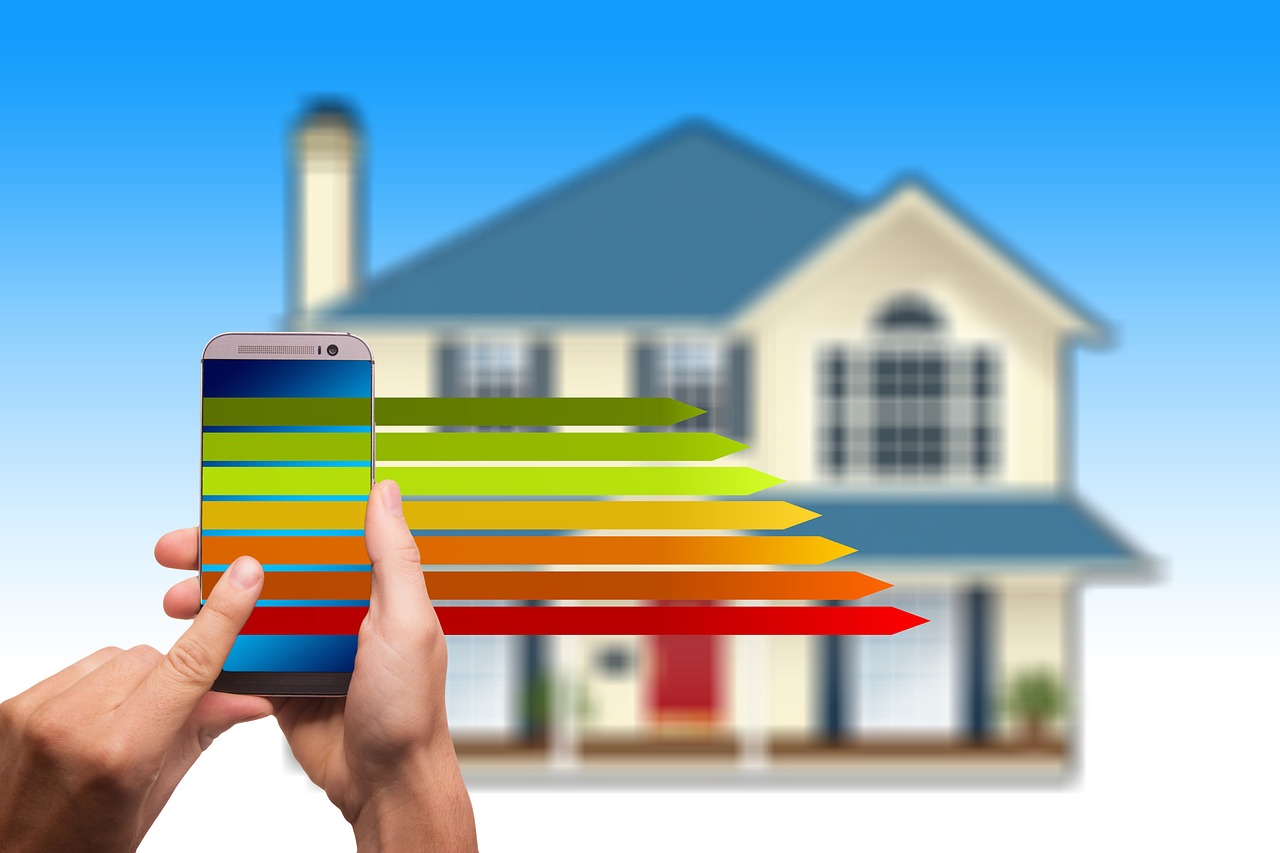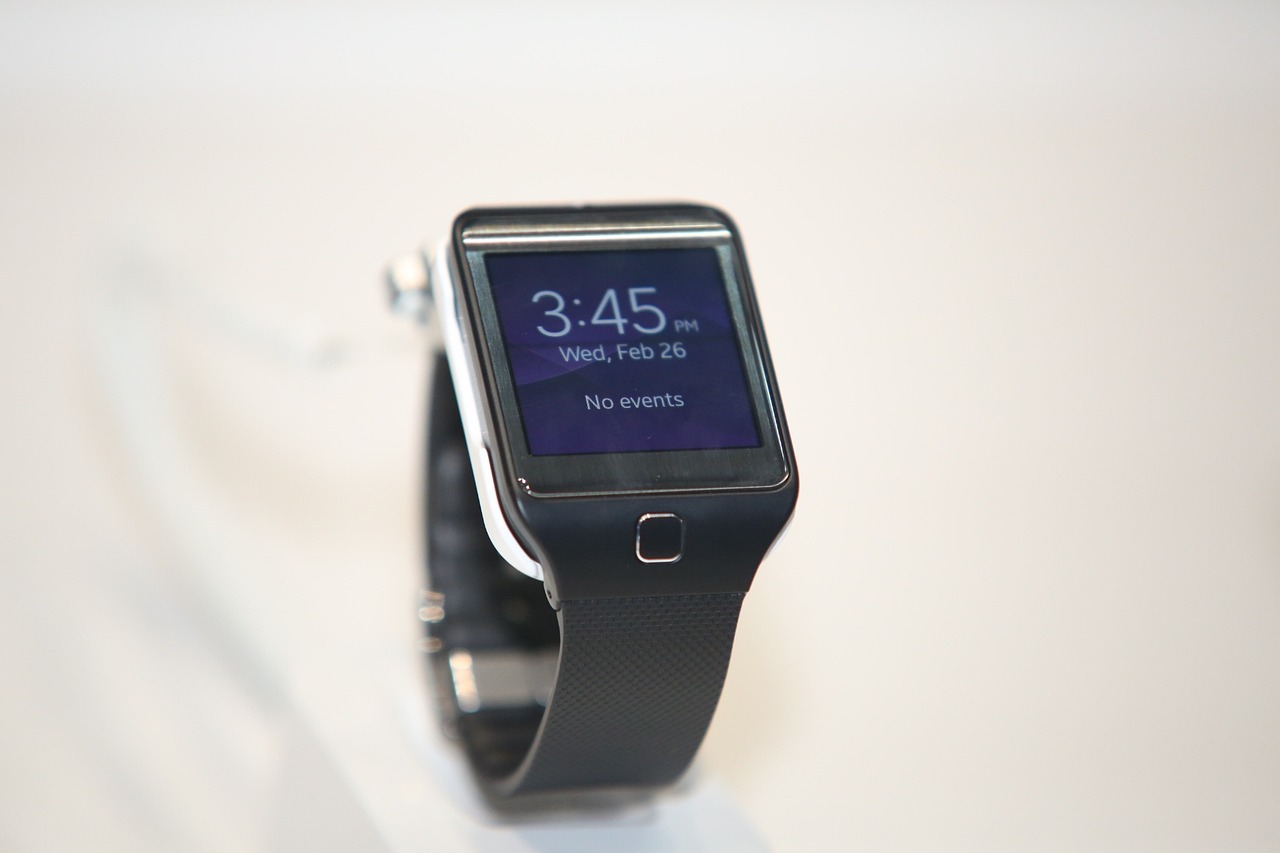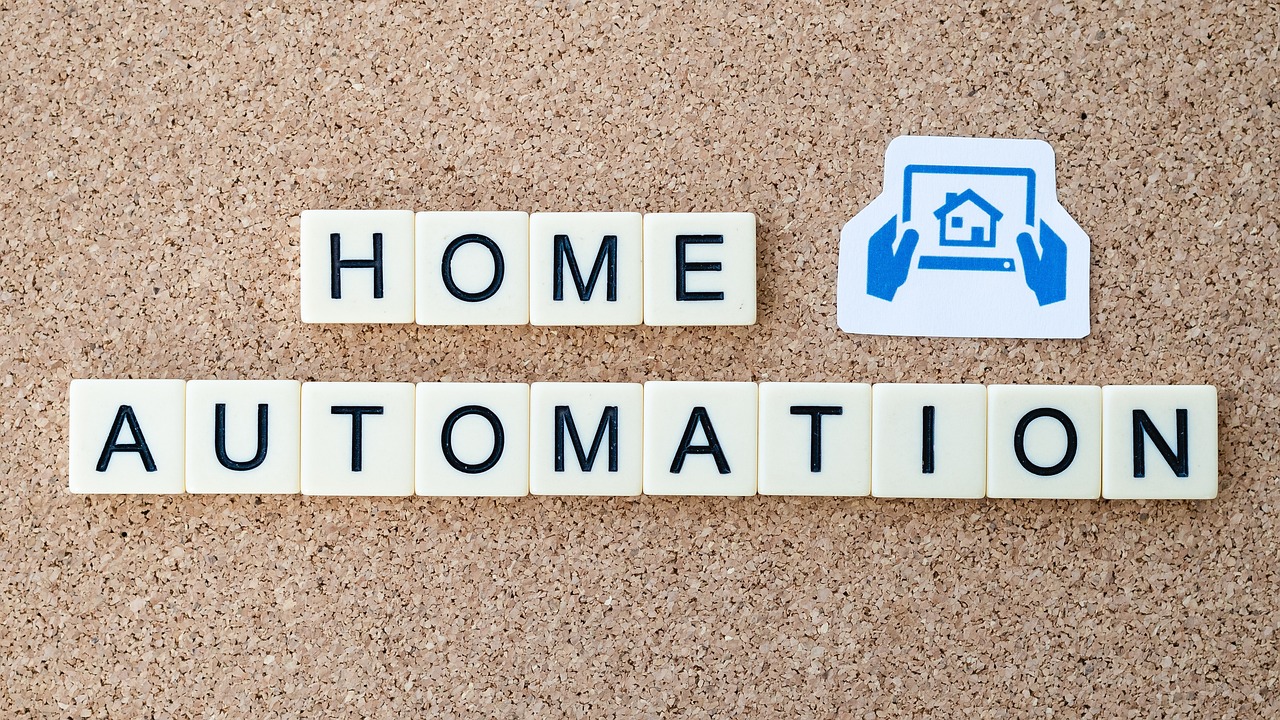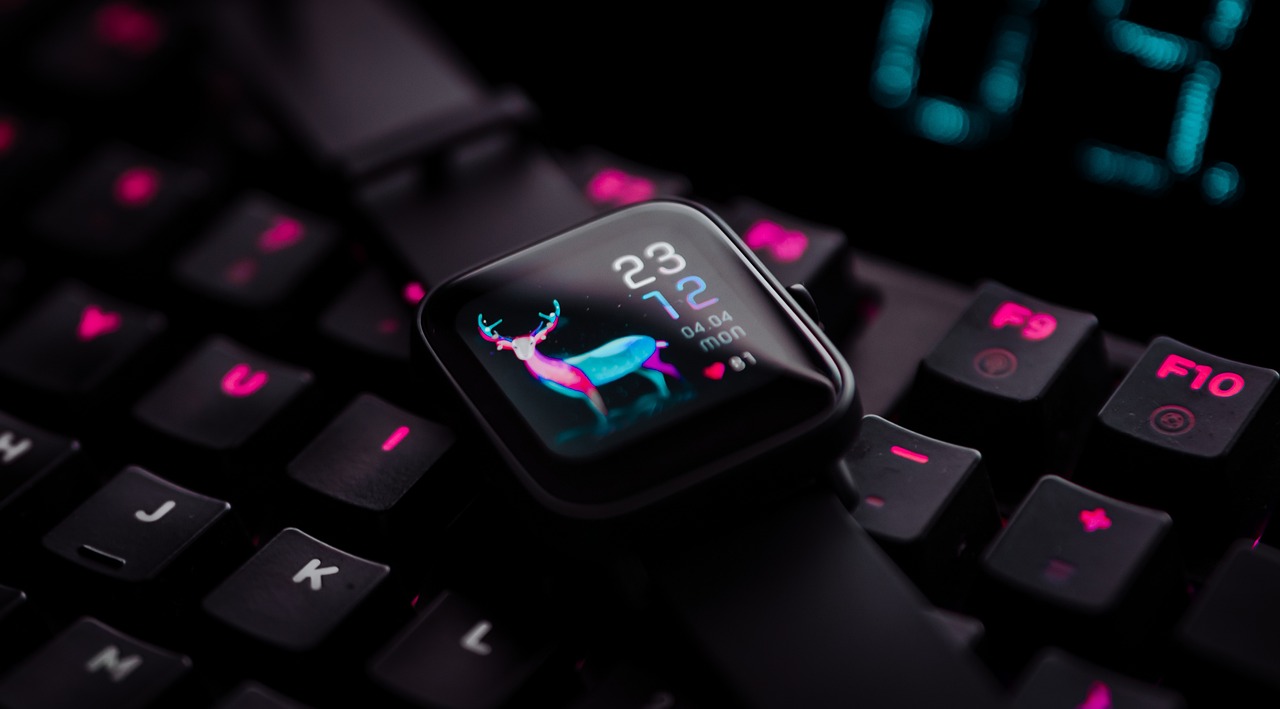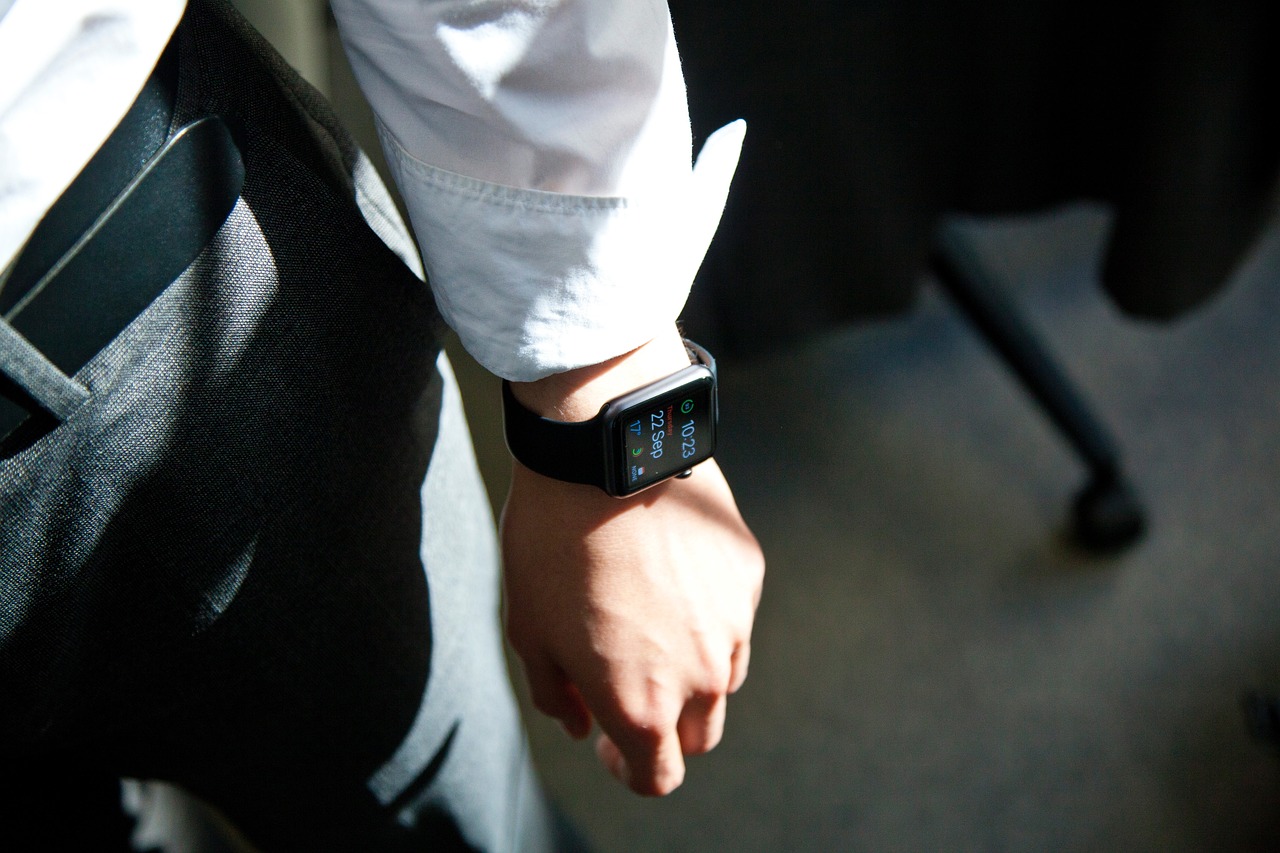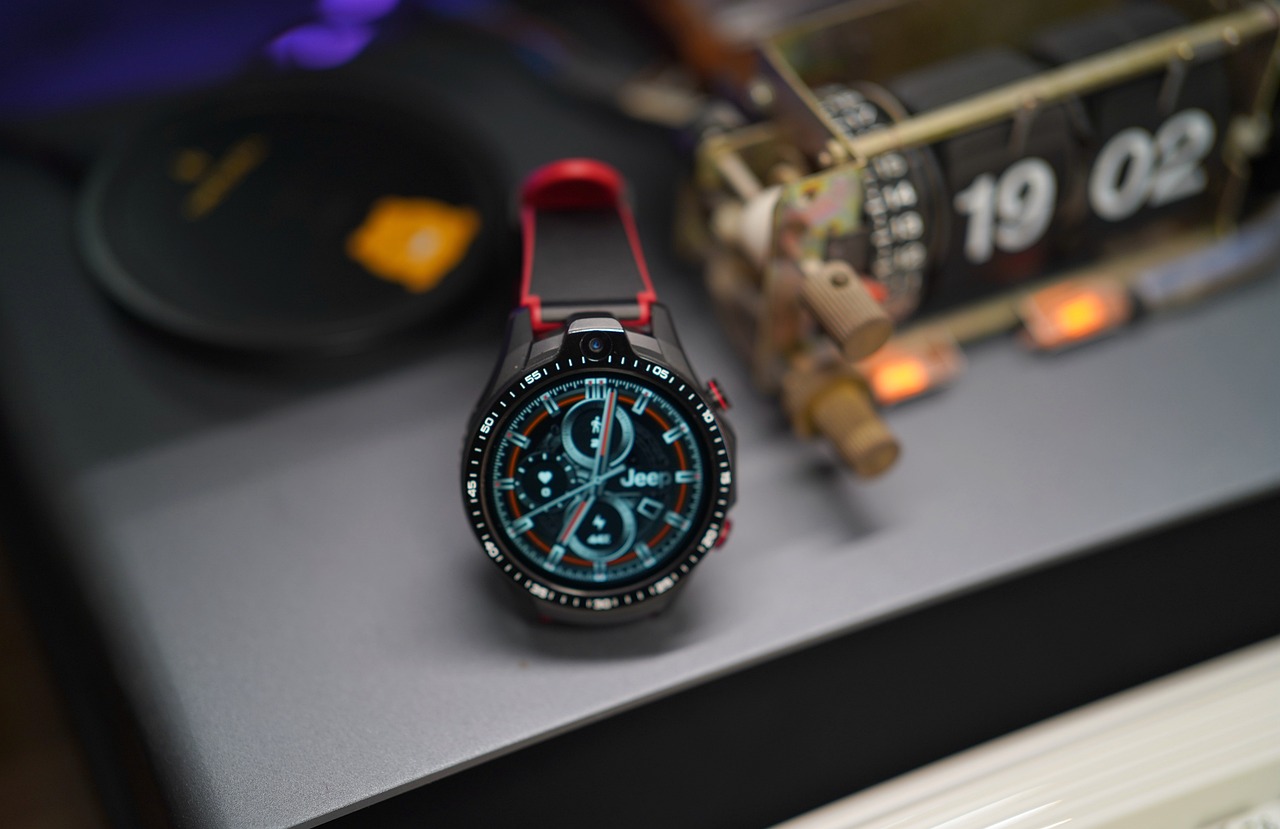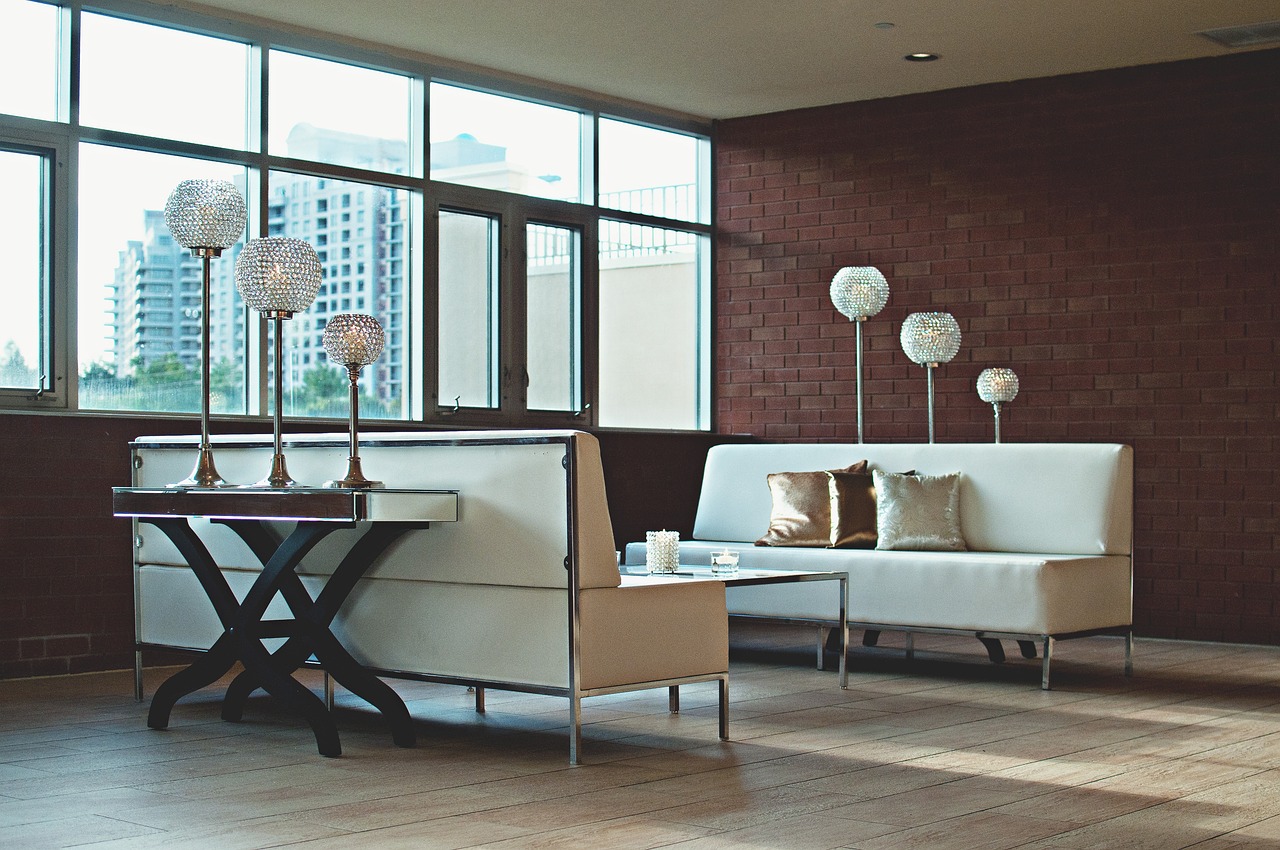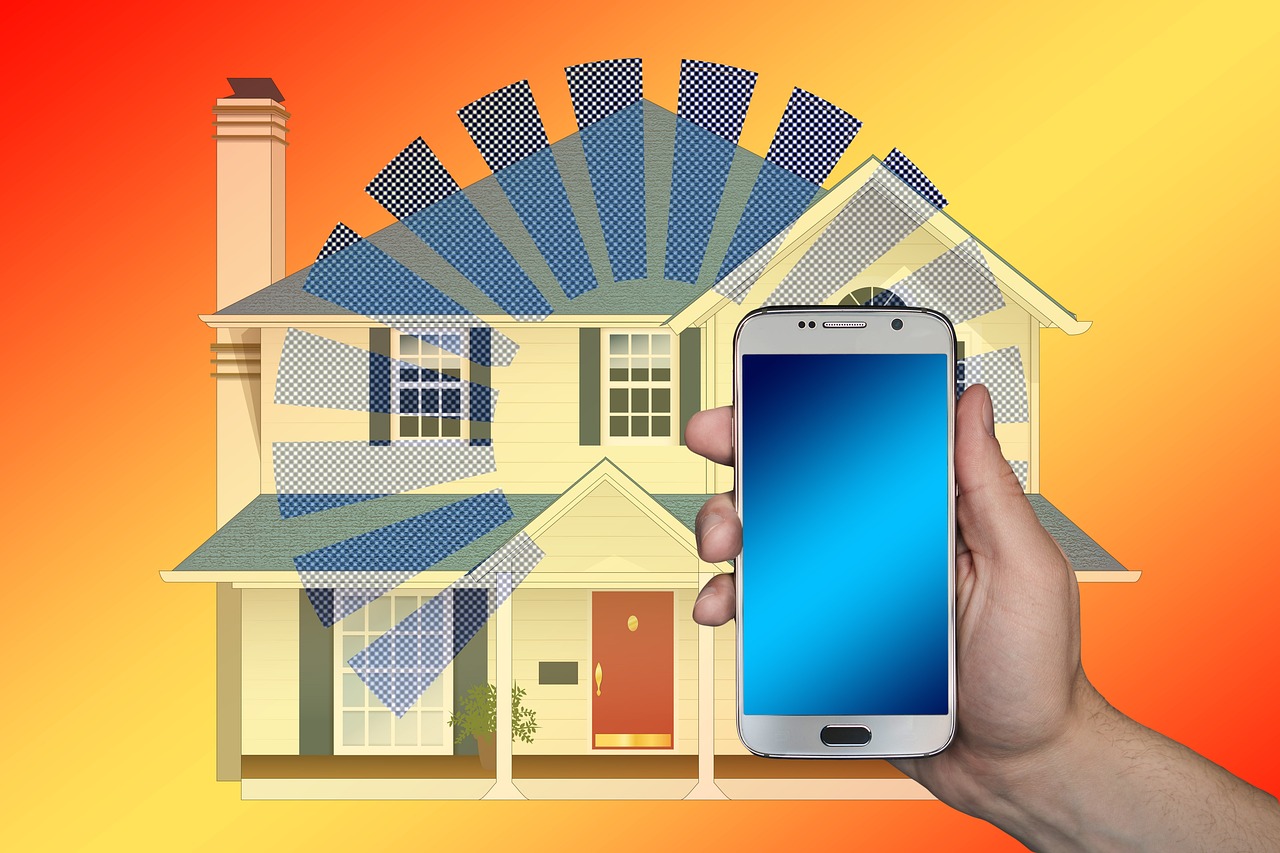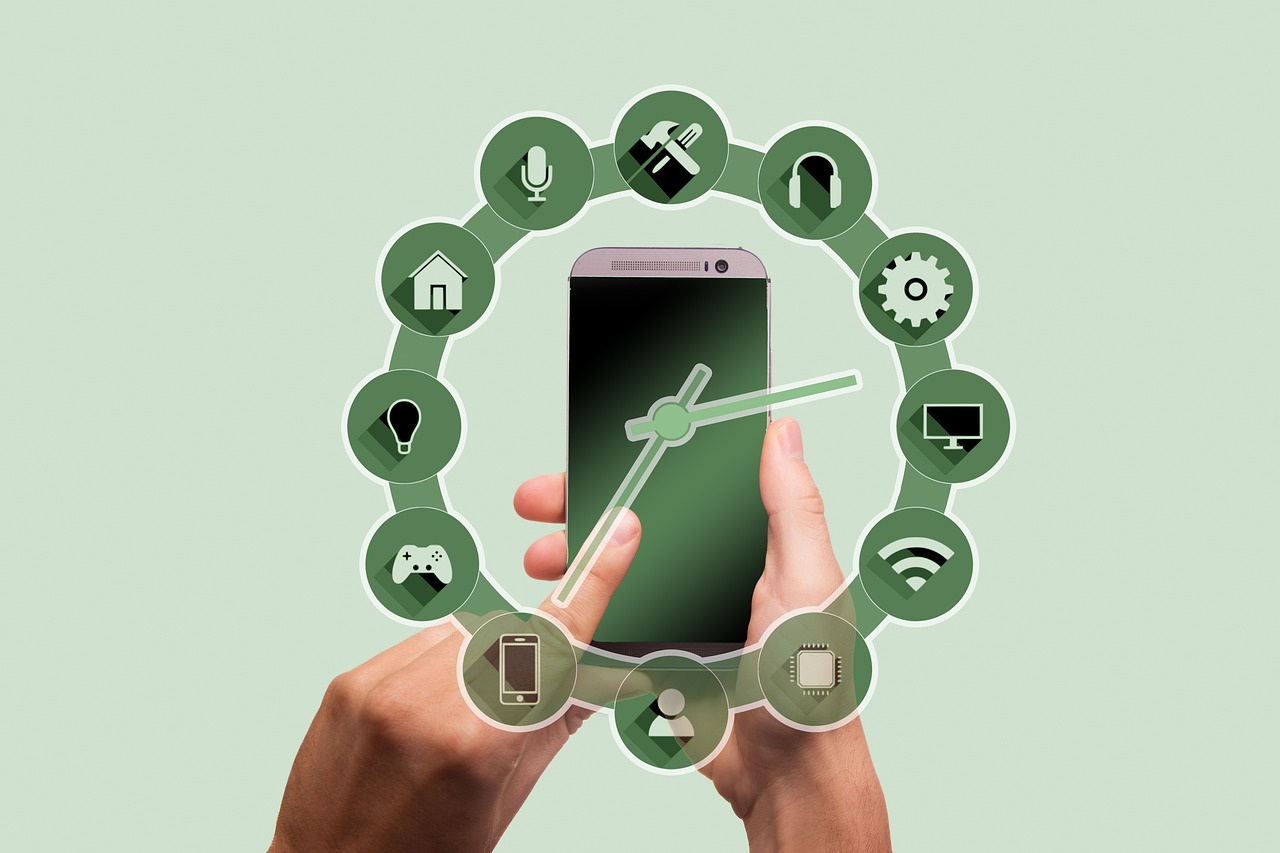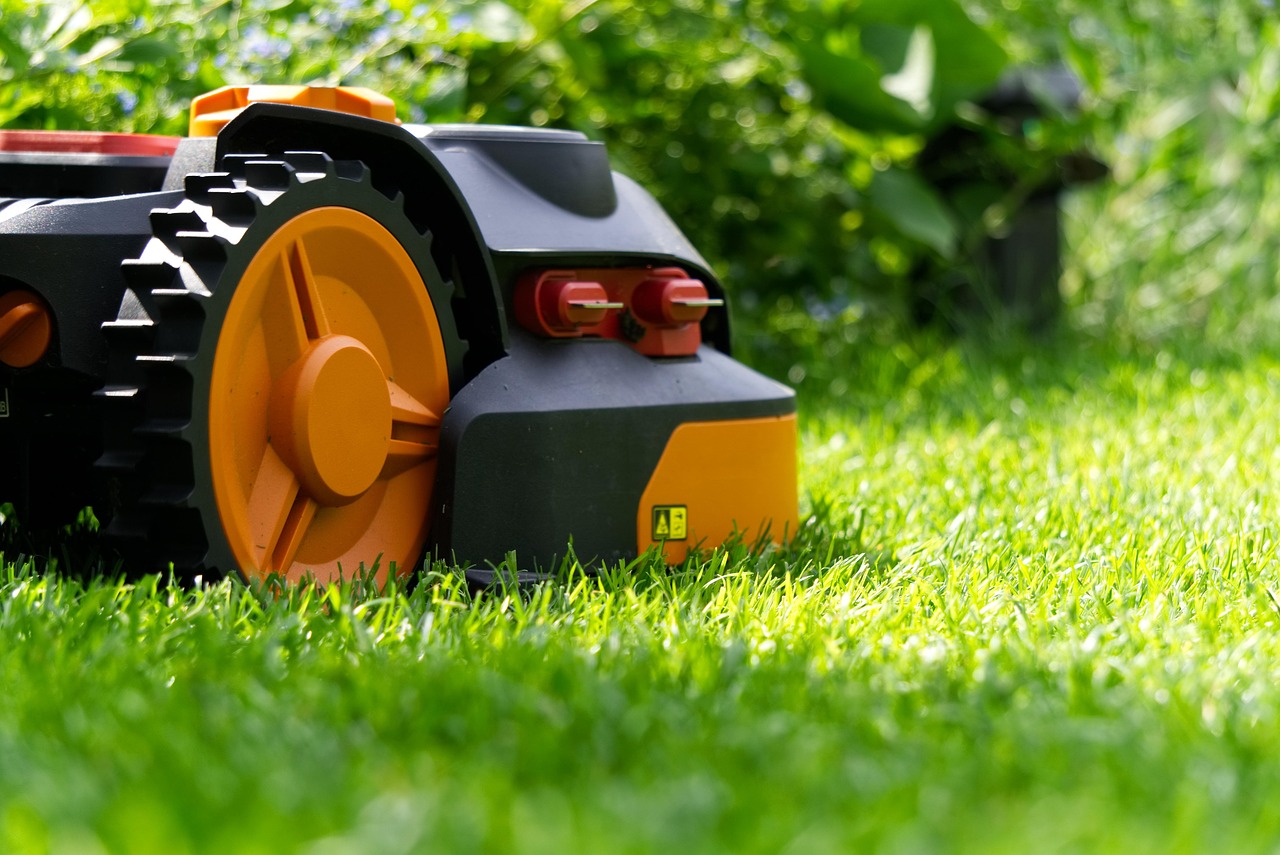This article delves into the best smart home devices designed specifically for seniors, highlighting how these technologies can significantly enhance their safety, comfort, and convenience in daily life.
1. Smart Security Systems
Smart security systems provide invaluable peace of mind for seniors. With features like surveillance cameras, motion detectors, and emergency alerts, these systems ensure that seniors can live safely and independently in their homes.
2. Voice-Activated Assistants
Devices like Amazon Echo and Google Home are game-changers for seniors. They can assist in managing daily tasks, setting reminders, and controlling other smart devices using simple voice commands, which eliminates the need for complicated interfaces.
- 2.1. Benefits of Voice Control: Voice control simplifies technology use for seniors, allowing them to interact with devices without needing to navigate complex interfaces.
- 2.2. Integration with Other Devices: These assistants can connect seamlessly with a range of smart home devices, enhancing overall convenience.
3. Smart Lighting Solutions
Smart lighting systems allow seniors to control the lighting in their homes remotely or via voice commands. This feature not only improves safety by reducing the risk of falls in dimly lit areas but also enhances overall comfort.
4. Health Monitoring Devices
Health monitoring devices such as smartwatches and medical alert systems empower seniors to track their health metrics and maintain connectivity with healthcare providers, which is crucial for managing health effectively.
5. Smart Thermostats
Smart thermostats enable seniors to adjust home temperatures remotely, ensuring a comfortable living environment while promoting energy efficiency. This is particularly important for maintaining health and comfort.
6. Smart Plugs and Outlets
Smart plugs allow seniors to control appliances remotely, enhancing convenience and safety by making it easy to turn off devices. This feature can prevent potential hazards, such as overheating appliances.
7. Smart Kitchen Appliances
Smart kitchen appliances simplify cooking and meal preparation, making it easier for seniors to maintain a healthy diet. With user-friendly interfaces, these devices are designed for ease of use.
8. Smart Entertainment Systems
Smart entertainment systems offer seniors easy access to their favorite shows and music, enhancing their leisure time and overall quality of life. Voice control features further simplify navigation.
9. Smart Home Hubs
Smart home hubs act as central control points, allowing seniors to manage all their connected devices efficiently. This centralized control simplifies the management of their smart home ecosystem.
10. Smart Doorbells
Smart doorbells enhance security by enabling seniors to see and communicate with visitors without opening the door. This feature promotes safety and peace of mind.
11. Smart Bed Systems
Smart bed systems can enhance sleep quality by allowing seniors to adjust firmness, position, and temperature, promoting better rest.
12. Conclusion: Embracing Smart Home Technology
Embracing smart home technology can greatly improve the quality of life for seniors, fostering safety, comfort, and independence while making daily tasks easier and more manageable.

1. Smart Security Systems
Smart Security Systems play a crucial role in enhancing the safety and well-being of seniors living independently. These advanced systems provide a range of features designed to ensure that older adults can feel secure and protected in their own homes.
At the core of smart security systems are surveillance cameras that offer real-time monitoring of the home environment. These cameras can be accessed remotely, allowing family members to keep an eye on their loved ones from anywhere in the world. Many systems also include motion detection capabilities, which send alerts to caregivers or family members if unusual activity is detected, providing an extra layer of security.
In addition to surveillance, smart security systems often come equipped with emergency response features. These can include panic buttons or wearable devices that seniors can activate in case of an emergency. When pressed, these devices can alert emergency services or designated contacts, ensuring that help is dispatched quickly. This feature is particularly beneficial for seniors who may experience falls or other health crises.
Moreover, many smart security systems integrate with other smart home devices, creating a comprehensive safety net. For instance, they can connect with smart lighting systems that automatically turn on when someone enters a room or when motion is detected, enhancing visibility during nighttime hours and reducing the risk of falls.
Overall, smart security systems not only provide peace of mind for seniors but also empower them to live independently while ensuring their safety. By incorporating these technologies, families can feel more secure knowing that their loved ones are protected and that help is readily available if needed.
| Feature | Benefits |
|---|---|
| Surveillance Cameras | Real-time monitoring and remote access |
| Motion Detection | Alerts for unusual activity |
| Emergency Response | Immediate assistance at the push of a button |
| Integration with Smart Devices | Enhanced safety through connected systems |

2. Voice-Activated Assistants
Voice-activated assistants have revolutionized how we interact with technology, particularly for seniors. Devices such as Amazon Echo and Google Home offer a range of features that help seniors manage their daily lives with ease and efficiency. These assistants enable users to perform a variety of tasks through simple voice commands, making technology more accessible to those who may struggle with traditional interfaces.
Voice-activated assistants are designed to simplify everyday tasks for seniors. They can assist with managing schedules, setting reminders for medications, and even controlling smart home devices such as lights and thermostats. This hands-free approach allows seniors to maintain their independence while ensuring they stay organized and connected.
- Simplicity: Voice control eliminates the need for complicated buttons or screens, making it easier for seniors to interact with technology.
- Convenience: Seniors can ask questions, play music, or get news updates without needing to physically manipulate devices.
Many voice-activated assistants include accessibility features specifically designed for seniors. These features may include larger text options, voice feedback, and customizable settings that cater to individual needs, making technology more approachable.
Voice assistants can seamlessly integrate with other smart home devices, creating a connected ecosystem. This integration allows seniors to control various aspects of their home environment, enhancing overall convenience and efficiency.
When choosing a voice assistant, seniors should consider their specific needs and preferences. Popular options like Amazon Alexa and Google Assistant offer unique features and compatibility with a wide range of devices, ensuring a tailored user experience.
In conclusion, voice-activated assistants are invaluable tools for seniors, promoting independence and enhancing their quality of life. By simplifying technology use and providing essential support, these devices help seniors navigate their daily routines with confidence.
2.1. Benefits of Voice Control
Voice control technology has become a game-changer for seniors, transforming the way they interact with their smart home devices. With the increasing complexity of technology, voice control simplifies the experience, allowing seniors to engage with their devices in a more intuitive and straightforward manner.
One of the primary benefits of voice control is its ability to eliminate the need for complex interfaces or touch screens. This is particularly advantageous for seniors who may struggle with fine motor skills or visual impairments. By simply speaking commands, they can manage their smart home systems, from adjusting the thermostat to controlling lights and appliances.
- Accessibility: Voice-activated assistants are designed with accessibility in mind. Features such as voice recognition can be tailored to understand various accents and speech patterns, making it easier for seniors to communicate with their devices.
- Hands-Free Operation: Many seniors find it challenging to physically interact with devices, especially if they have mobility issues. Voice control allows them to perform tasks without needing to move around, enhancing their independence.
- Integration with Smart Devices: Voice assistants can connect seamlessly with a variety of smart home devices, creating a unified system that can be controlled through simple voice commands. This integration enhances the overall user experience and makes daily routines more manageable.
- Emergency Assistance: In case of emergencies, voice control can serve as a lifeline. Seniors can call for help or alert family members simply by speaking, ensuring they receive timely assistance when needed.
Moreover, the user-friendly nature of voice control technology encourages seniors to embrace smart home devices. As they become more comfortable using these tools, they can enjoy a greater sense of autonomy and security in their daily lives.
In conclusion, voice control is not just a convenience; it is a vital tool that empowers seniors to navigate their environments more effectively, enhancing their quality of life and fostering greater independence.
2.1.1. Accessibility Features
Accessibility Features in voice-activated assistants are essential for enhancing the usability of technology among seniors. These features are specifically designed to cater to the unique needs of older adults, making it easier for them to interact with smart devices.
One of the most significant aspects of these accessibility features is the voice recognition capability, which allows seniors to issue commands without needing to navigate complicated menus or touch screens. This is particularly beneficial for those who may have limited mobility or dexterity. Additionally, many voice assistants support a range of languages and accents, ensuring that users can communicate in a way that feels comfortable to them.
Another important feature is the customizable settings that allow seniors to adjust the assistant’s responsiveness and sensitivity. For instance, they can set the device to respond only to their voice, reducing the chances of accidental activations. This personalization makes technology feel more intuitive and less intimidating.
Moreover, voice-activated assistants often come with visual aids such as large text displays and high-contrast colors, which can be extremely helpful for seniors with visual impairments. These visual elements complement the auditory feedback, providing a multi-sensory interaction experience.
Furthermore, many voice assistants can integrate with other smart home devices, creating a cohesive ecosystem that promotes independence. For example, seniors can control lights, thermostats, and security systems simply by speaking, making their living environments more accessible and manageable.
In conclusion, the accessibility features of voice-activated assistants play a crucial role in bridging the gap between seniors and technology. By focusing on user-friendly designs and personalized settings, these devices empower older adults to embrace smart home technology confidently.
2.1.2. Integration with Other Devices
Integration with Other Devices is a crucial aspect of modern smart home technology, particularly for seniors who benefit greatly from a connected ecosystem. Voice assistants, such as Amazon Alexa and Google Assistant, can seamlessly interact with a variety of smart devices, creating a more efficient and convenient living environment.
By integrating voice assistants with other smart home devices, seniors can control their environment with simple voice commands. This hands-free control is especially beneficial for those with mobility challenges or those who may find traditional interfaces daunting. For example, a senior can easily adjust the thermostat, turn on lights, or even lock doors, all without needing to physically get up or navigate through complex menus.
- Smart Lighting: Voice assistants can control smart bulbs, allowing seniors to brighten or dim lights simply by asking.
- Smart Thermostats: Integration with voice assistants enables seniors to set their home temperatures comfortably, enhancing their overall living experience.
- Smart Security Systems: Seniors can receive alerts and control security cameras or locks through voice commands, ensuring peace of mind.
Moreover, the integration of voice assistants with health monitoring devices allows for real-time health updates. For instance, seniors can ask their devices about their daily health metrics or receive reminders for medication, ensuring they stay on track with their health management.
The compatibility of voice assistants with a wide range of devices enhances their usability. Many seniors may not be aware of the extent to which these systems can work together, which is why education and guidance are vital. With a little setup, they can enjoy a fully integrated smart home experience that promotes independence and safety.
In conclusion, the integration of voice assistants with other smart home devices is not only about convenience; it is about creating a supportive environment that enhances the quality of life for seniors. By leveraging these technologies, seniors can enjoy greater autonomy and safety in their homes.
2.2. Popular Voice Assistants
In today’s digital age, voice assistants have become essential tools for enhancing daily life, especially for seniors. These devices can simplify tasks, improve communication, and provide entertainment, making them invaluable companions. Here, we explore some of the most popular voice assistants available, helping seniors make informed choices based on their unique needs and preferences.
- Amazon Alexa
- Alexa is known for its extensive compatibility with smart home devices, allowing seniors to control lights, thermostats, and more with simple voice commands.
- It features a user-friendly interface and offers skills tailored for seniors, including medication reminders and news updates.
- Google Assistant
- Google Assistant excels in providing information and answering questions, making it ideal for seniors seeking quick answers or assistance.
- Its integration with Google services allows for seamless calendar management and reminders, helping seniors stay organized.
- Apple Siri
- Siri is integrated into Apple devices, making it a great choice for seniors who are already familiar with the Apple ecosystem.
- With features such as voice-activated text messaging and hands-free calling, Siri enhances communication effortlessly.
- Microsoft Cortana
- Cortana provides reminders, calendar management, and task lists, making it suitable for seniors looking to stay organized.
- Although its popularity has waned, it remains a useful option for those using Windows devices.
When selecting a voice assistant, seniors should consider factors such as compatibility with existing devices, ease of use, and the specific features that cater to their daily routines. By exploring these popular options, seniors can find the voice assistant that best meets their needs, ultimately enhancing their quality of life.

3. Smart Lighting Solutions
Smart Lighting Solutions are transforming the way seniors interact with their living spaces. These innovative systems not only enhance convenience but also significantly improve safety and comfort for older adults.
As individuals age, mobility can become a challenge, and poor lighting can lead to dangerous falls and accidents. Smart lighting systems address this issue by allowing seniors to control lighting remotely or through voice commands. This means that they can easily turn on lights before entering a room, reducing the risk of stumbling in the dark.
- Enhanced Safety: Bright, well-lit areas can deter accidents. Seniors can schedule lights to turn on at specific times, ensuring that they are never in the dark.
- Remote Control: With smart lighting, seniors can control their home’s lighting from their smartphones or via voice-activated devices, providing an extra layer of convenience.
- Energy Efficiency: Many smart lighting systems use LED technology, which consumes less energy, helping seniors save on utility bills.
Motion sensor lights are particularly beneficial for seniors. These lights automatically illuminate when someone enters a room, providing a welcoming glow without the need for manual operation. This feature is especially useful during nighttime hours when visibility is low.
Smart lighting systems can be integrated with voice-activated assistants, allowing seniors to control their lights with simple commands. For instance, saying “Turn on the living room lights” can instantly brighten up their space without any physical effort.
Incorporating smart lighting solutions into a senior’s home can greatly enhance their quality of life. By improving safety, convenience, and energy efficiency, these systems empower seniors to live more independently and confidently.
3.1. Benefits of Smart Lighting
Smart lighting systems have revolutionized the way we illuminate our homes, especially for seniors. These advanced solutions not only offer convenience but also significantly enhance security and overall well-being. Here, we explore the key benefits that smart lighting brings to the lives of seniors.
- Remote Control: Seniors can easily control their lights from anywhere using a smartphone or a voice-activated assistant. This feature is particularly beneficial for those who may have mobility issues.
- Scheduled Lighting: Smart lighting allows seniors to set schedules for when lights should turn on or off. This can create the illusion of someone being home, which is a great security measure.
- Energy Efficiency: Many smart lighting systems use LED technology, which consumes less energy than traditional bulbs. This results in lower electricity bills, making it a cost-effective solution for seniors on a fixed income.
- Motion Sensors: Motion sensor lights can automatically turn on when someone enters a room, providing illumination in dark areas and reducing the risk of falls.
- Customization: Seniors can customize the brightness and color of their lights to suit their preferences, enhancing their comfort and mood.
- Integration with Other Devices: Smart lighting can be integrated with other smart home devices, allowing for a more cohesive and responsive living environment. For instance, lights can be programmed to turn on when a smart doorbell detects motion.
In conclusion, the benefits of smart lighting extend beyond mere convenience. By enhancing security, promoting energy efficiency, and providing customizable options, smart lighting systems can significantly improve the quality of life for seniors, making their homes safer and more comfortable.
3.2. Motion Sensor Lights
Motion Sensor Lights are an innovative solution designed to enhance safety and convenience, particularly for seniors. These lights automatically illuminate when they detect movement, providing a reliable source of light in areas that may otherwise be dimly lit. This feature is especially beneficial during nighttime hours when seniors may need to navigate their homes.
By installing motion sensor lights in key areas such as hallways, bathrooms, and staircases, seniors can significantly reduce the risk of falls and injuries. The sudden illumination helps to guide them safely, ensuring they can move around their homes with confidence. Moreover, these lights can be programmed to turn off after a certain period of inactivity, conserving energy while still providing necessary illumination.
In addition to safety, motion sensor lights also offer a sense of comfort. Many seniors may feel uneasy moving around in the dark, and having lights that activate automatically can alleviate these concerns. This technology not only promotes independence but also enhances the overall living experience for seniors.
Another advantage is the energy efficiency of motion sensor lights. Since they only activate when needed, they can help lower electricity bills compared to traditional lighting systems that are left on continuously. This feature is particularly appealing for seniors who are looking to manage their household expenses effectively.
Overall, integrating motion sensor lights into a senior’s home can greatly improve their quality of life, providing both safety and peace of mind. As technology continues to evolve, these lighting solutions are becoming more accessible and affordable, making them an essential component of modern smart homes.
| Feature | Benefits |
|---|---|
| Automatic Illumination | Enhances safety by lighting up dark areas when movement is detected. |
| Energy Efficiency | Reduces electricity costs by only operating when necessary. |
| Ease of Use | Eliminates the need for manual switches, making it user-friendly for seniors. |
- Installation: Simple and can often be done without professional help.
- Versatility: Suitable for both indoor and outdoor use.
- Customization: Many models offer adjustable sensitivity and timer settings.
In conclusion, motion sensor lights are a practical and beneficial addition to any home, especially for seniors seeking to maintain their independence while ensuring their safety.

4. Health Monitoring Devices
Health Monitoring Devices are becoming increasingly essential for seniors, providing a way to keep track of their health metrics and maintain communication with healthcare providers. These devices include smartwatches, medical alert systems, and other wearable technologies that empower seniors to take charge of their health.
Regular health tracking through these devices can significantly enhance well-being. Seniors can monitor vital signs such as heart rate, blood pressure, and glucose levels. This information can be shared directly with healthcare professionals, facilitating timely interventions and personalized care plans. Additionally, these devices often come equipped with features that remind users to take medications, ensuring adherence to prescribed regimens.
Emergency response systems are vital for seniors living independently. These systems enable seniors to call for help with the push of a button, providing peace of mind for both the seniors and their families. Some advanced systems even include fall detection technology, automatically alerting emergency services if a fall is detected. This feature can be crucial in ensuring that seniors receive immediate assistance in emergencies.
Many health monitoring devices can sync with mobile applications, allowing seniors to track their health data over time. This integration provides a comprehensive view of their health trends, making it easier to discuss changes with healthcare providers. Users can set personal health goals and receive motivational reminders through these apps, encouraging a proactive approach to health management.
Health monitoring devices are designed with seniors in mind, featuring intuitive interfaces and easy-to-read displays. Many devices are also equipped with voice commands or simple touch controls, making them accessible for individuals with varying levels of tech-savviness. This user-friendly design is crucial in ensuring that seniors can comfortably use these technologies without frustration.
In conclusion, health monitoring devices play a pivotal role in enhancing the quality of life for seniors. By enabling effective health tracking and ensuring timely communication with healthcare providers, these devices not only promote independence but also significantly contribute to overall health and safety.
4.1. Importance of Health Tracking
For seniors, regular health monitoring is vital in managing chronic conditions and ensuring overall well-being. By keeping a close eye on their health metrics, seniors can detect potential health issues early, which can lead to more effective treatment and improved quality of life.
Health tracking encompasses a variety of activities, including:
- Monitoring Blood Pressure: High blood pressure can lead to serious health issues. Regular checks help seniors manage their cardiovascular health.
- Tracking Blood Sugar Levels: For seniors with diabetes, consistent monitoring is crucial to prevent complications.
- Heart Rate Monitoring: Keeping track of heart rate can alert seniors to potential heart problems.
- Weight Management: Regular weight checks help seniors maintain a healthy weight, which is essential for overall health.
Utilizing health monitoring devices such as smartwatches and fitness trackers can significantly aid in this process. These devices provide real-time data, allowing seniors to:
- Receive alerts for abnormal readings.
- Share data with healthcare providers for better-informed decisions.
- Set reminders for medication and appointments.
Moreover, engaging in regular health assessments fosters a sense of independence and empowers seniors to take charge of their health. This proactive approach not only supports physical health but also enhances mental well-being by reducing anxiety related to health uncertainties.
In conclusion, health tracking is an essential practice for seniors, enabling them to manage chronic conditions effectively and maintain their overall health. By embracing technology and staying vigilant, seniors can promote a healthier, more fulfilling life.
4.2. Emergency Response Systems
Emergency response systems are essential tools designed to ensure the safety and well-being of seniors living independently. These systems provide immediate assistance at the push of a button, allowing seniors to summon help quickly in case of an emergency. With the increasing number of seniors opting to age in place, these systems have become a vital part of their daily lives.
One of the most significant advantages of emergency response systems is their ability to connect users with trained professionals or family members instantly. Many systems come equipped with features such as:
- 24/7 Monitoring: Continuous monitoring ensures that help is always available, no matter the time of day.
- Fall Detection: Advanced sensors can automatically detect falls and alert emergency services, even if the user is unable to press the button.
- GPS Tracking: For seniors who may wander, GPS tracking can help locate them quickly, providing peace of mind for both the user and their loved ones.
Moreover, these systems are designed to be user-friendly, with many offering wearable devices like pendants or wristbands, making it easy for seniors to call for help without any hassle. The integration of modern technology has also led to the development of smartphone apps that allow family members to monitor their loved ones’ status in real-time.
In addition to offering immediate assistance, emergency response systems can also serve as a preventive measure. By providing seniors with a sense of security, these systems encourage them to maintain their independence and engage in daily activities without fear. This can lead to improved mental health and overall well-being.
In conclusion, emergency response systems are a crucial component of senior care, offering not only quick access to help but also the confidence to live independently. With various options available, seniors and their families can choose a system that best fits their needs, ensuring safety and peace of mind.

5. Smart Thermostats
Smart thermostats represent a significant advancement in home temperature control, especially for seniors. These innovative devices allow for remote management of home heating and cooling systems, ensuring that seniors can maintain a comfortable living environment with ease.
One of the primary advantages of smart thermostats is their ability to promote energy efficiency. By learning the routines and preferences of users, these devices can automatically adjust the temperature based on when the home is occupied or unoccupied. This not only helps in reducing energy consumption but also leads to lower utility bills, making it a financially wise choice for seniors on a fixed income.
5.1. Benefits of Temperature Control
- Maintaining a consistent and comfortable temperature is vital for seniors, as extreme temperatures can lead to health issues.
- Smart thermostats can be programmed to ensure that living spaces remain warm during winter months and cool in the summer, enhancing overall comfort.
- Many models come equipped with geofencing technology, which adjusts the temperature based on the user’s location, ensuring optimal comfort upon arrival at home.
5.2. Energy Savings
- Smart thermostats can significantly reduce energy usage by optimizing heating and cooling schedules.
- Some models offer detailed energy reports, allowing seniors to understand their energy consumption better and make informed decisions.
- In addition to saving money, these devices contribute to environmental sustainability by reducing the carbon footprint of households.
In conclusion, smart thermostats are an essential addition to the homes of seniors, providing both comfort and efficiency. By investing in these devices, seniors can enjoy a more manageable and eco-friendly living environment.
5.1. Benefits of Temperature Control
Maintaining a comfortable temperature is essential for seniors, as it plays a significant role in their overall health and well-being. As individuals age, their bodies may become less efficient at regulating temperature, making them more susceptible to extreme heat or cold. Therefore, having a reliable method to control home temperatures is crucial.
- Health Implications: Seniors are at a higher risk of heat-related illnesses such as heat exhaustion and heat stroke. Conversely, cold temperatures can lead to hypothermia and exacerbate existing health conditions. By maintaining a stable and comfortable temperature, seniors can minimize these risks.
- Improved Comfort: A well-regulated environment can enhance the overall comfort of seniors, allowing them to relax and enjoy their home. This comfort can lead to improved mental health, reducing feelings of anxiety and depression.
- Better Sleep Quality: Temperature control is vital for a good night’s sleep. A comfortable sleeping environment can help seniors fall asleep faster and stay asleep longer, promoting better rest and recovery.
- Energy Efficiency: Smart thermostats can learn and adapt to the habits of seniors, optimizing heating and cooling schedules. This not only ensures comfort but also helps in reducing energy consumption and lowering utility bills.
In conclusion, effective temperature control is not just about comfort; it is a critical aspect of health management for seniors. By investing in smart thermostats and other temperature-regulating devices, families can ensure their loved ones live in a safe and comfortable environment.
5.2. Energy Savings
Smart thermostats are revolutionizing the way we manage our home heating and cooling systems. One of the most significant benefits of these devices is their ability to learn users’ habits. By analyzing daily routines, smart thermostats can optimize heating and cooling schedules, ensuring maximum comfort while minimizing energy consumption.
These devices use advanced algorithms and machine learning to track when you are home or away. For instance, if you typically leave for work at 8 AM and return at 6 PM, the thermostat can adjust the temperature accordingly. During the hours you are away, it can reduce heating or cooling, which leads to substantial energy savings over time. This not only helps in lowering utility bills but also contributes to a more sustainable environment.
Moreover, many smart thermostats can be controlled remotely through mobile applications. This feature allows users to make adjustments on-the-go, ensuring that energy is not wasted when no one is home. You can preheat or cool your home before you arrive, maintaining a comfortable atmosphere without unnecessary energy expenditure.
In addition, some smart thermostats provide detailed energy usage reports. These insights enable users to understand their energy consumption patterns better, encouraging more informed decisions about their heating and cooling habits. By identifying peak usage times, individuals can make adjustments to further enhance efficiency.
Overall, the integration of smart thermostats into homes is a significant step towards achieving energy efficiency and reducing costs. As technology continues to evolve, these devices will become even more sophisticated, offering greater control and savings for users.

6. Smart Plugs and Outlets
Smart Plugs and Outlets are revolutionary devices that significantly enhance the living experience for seniors. These gadgets allow users to control their appliances remotely, providing an added layer of convenience and safety in daily routines. By integrating smart plugs into their homes, seniors can manage a variety of devices, from lamps to coffee makers, with just a touch on their smartphones or through voice commands.
6.1. Automation for Daily Tasks
One of the most compelling features of smart plugs is their ability to automate daily tasks. For instance, seniors can schedule their lights to turn on at sunset or set their coffee maker to start brewing in the morning. This automation not only reduces the need for physical effort but also helps seniors maintain a consistent routine, which is crucial for their well-being.
6.2. Safety Features
Safety is a paramount concern for seniors living independently. Smart plugs offer features that can prevent appliances from overheating or consuming excessive energy, thereby minimizing the risk of fires or electrical hazards. Additionally, seniors can easily turn off devices remotely, ensuring that they never leave appliances running unattended.
6.3. Energy Efficiency
Another advantage of using smart plugs is energy efficiency. These devices can monitor energy usage, helping seniors understand which appliances consume the most power. By making informed choices, they can lower their utility bills while contributing to a more sustainable environment.
Conclusion
In summary, smart plugs and outlets are essential tools for enhancing the quality of life for seniors. They provide convenience, improve safety, and promote energy efficiency, making daily tasks easier and more manageable. As technology continues to evolve, embracing these smart home devices can empower seniors to live independently while ensuring their safety and comfort.
6.1. Automation for Daily Tasks
Automation for Daily Tasks is a game-changer for seniors, allowing them to manage their daily routines with ease and efficiency. By utilizing smart plugs, seniors can automate various household tasks, significantly reducing the physical effort required to perform them. This technology not only simplifies daily chores but also enhances overall quality of life.
Smart plugs can be easily controlled via smartphone apps or voice commands, enabling seniors to turn devices on or off remotely. For instance, a senior can schedule their coffee maker to start brewing in the morning without needing to get out of bed. This convenience is particularly beneficial for those with mobility challenges.
Moreover, smart plugs can help seniors develop a structured routine. By programming lights to turn on at specific times, they can create a sense of normalcy and security, especially during evening hours. This automation not only helps in maintaining a comfortable living environment but also reduces the risk of accidents caused by moving around in the dark.
| Benefits of Smart Plugs | Examples of Automation |
|---|---|
| Convenience in controlling devices | Automating lights, fans, or heaters |
| Energy Efficiency by scheduling usage | Turning off devices when not in use |
| Improved Safety by preventing overheating | Setting timers for appliances |
In addition to enhancing convenience, smart plugs also offer safety features. Many models come equipped with overload protection, which can prevent appliances from overheating and reduce the risk of fire hazards. This is especially important for seniors living alone, as it provides an added layer of security.
In conclusion, the integration of smart plugs into a senior’s daily routine can lead to a more independent lifestyle. By automating everyday tasks, seniors can focus on what truly matters—enjoying their time with family and friends, while maintaining their comfort and safety at home.
6.2. Safety Features
Safety Features of Smart Plugs: A Vital Addition for Seniors
In today’s world, technology plays a crucial role in enhancing safety and convenience for seniors. One such innovation is the smart plug, which not only allows for remote control of appliances but also incorporates essential safety features that can significantly benefit elderly individuals living alone.
- Overheating Prevention: Smart plugs are equipped with sensors that monitor the temperature of connected devices. If an appliance begins to overheat, the smart plug can automatically cut off power, reducing the risk of fires and ensuring peace of mind for both seniors and their families.
- Energy Monitoring: Many smart plugs come with energy monitoring capabilities, allowing users to track the energy consumption of their appliances. This feature helps seniors identify devices that may be using excessive energy, promoting better energy management and potentially lowering utility bills.
- Remote Control: With the ability to control appliances from a smartphone app, seniors can easily turn off devices they may have forgotten about, further enhancing safety in their homes.
- Scheduling Features: Smart plugs often include scheduling options, allowing seniors to set specific times for appliances to turn on or off. This feature can be particularly useful for managing heating devices or lights, ensuring that they are only in use when necessary.
Incorporating smart plugs into the homes of seniors can provide an extra layer of safety that is essential for those living independently. By preventing overheating and allowing for better energy management, these devices not only enhance safety but also contribute to a more comfortable living environment.
Conclusion: The adoption of smart plugs with advanced safety features is a proactive step towards ensuring the well-being of seniors. As technology continues to evolve, integrating such devices into their daily lives can lead to greater independence and security.

7. Smart Kitchen Appliances
In today’s fast-paced world, smart kitchen appliances are revolutionizing the way seniors approach cooking and meal preparation. These innovative devices are designed to simplify the culinary experience, making it more accessible and enjoyable for older adults. By integrating technology into the kitchen, seniors can maintain a healthy diet with ease, ensuring they receive the nutrition they need.
7.1. Enhanced Cooking Experience
Smart kitchen appliances, such as smart refrigerators and smart ovens, come equipped with user-friendly interfaces that cater specifically to seniors. These devices often feature touchscreens with large icons and voice commands, allowing for easy navigation without the hassle of complicated buttons. For instance, a smart oven can suggest recipes based on available ingredients, making meal planning straightforward and fun.
7.2. Remote Monitoring and Control
One of the standout features of smart kitchen appliances is their ability to be monitored and controlled remotely. Seniors can check the status of their cooking or adjust the temperature of their ovens from the comfort of their living rooms. This remote access not only enhances convenience but also allows caregivers to assist in meal preparation from afar, ensuring that seniors are safe and well-fed.
7.3. Meal Preparation Assistance
Smart kitchen appliances can also provide step-by-step cooking instructions through voice activation or visual displays. This feature is particularly beneficial for seniors who may struggle with memory or cognitive challenges. By following guided recipes, they can feel more confident in their cooking abilities, promoting independence and self-sufficiency.
7.4. Energy Efficiency
In addition to making cooking easier, many smart kitchen appliances are designed to be energy-efficient. For example, smart refrigerators can monitor food freshness and suggest optimal storage conditions, while smart ovens can adjust cooking times and temperatures to save energy. This not only helps seniors reduce their utility bills but also contributes to a more sustainable environment.
Conclusion
In summary, smart kitchen appliances are an invaluable addition to the homes of seniors. By simplifying cooking and meal preparation, these devices enable older adults to maintain a healthy diet while enjoying the culinary experience. With user-friendly interfaces, remote monitoring capabilities, and energy efficiency, smart kitchen technology is paving the way for a more independent and fulfilling lifestyle for seniors.
7.1. User-Friendly Interfaces
Modern smart kitchen appliances are revolutionizing the cooking experience, particularly for seniors. These devices are equipped with intuitive user interfaces that prioritize simplicity and accessibility. The design of these interfaces caters specifically to the needs of older adults, making cooking not only easier but also more enjoyable.
One of the key features of these appliances is their touchscreen displays, which often come with large icons and clear text. This design choice minimizes confusion and allows seniors to navigate menus effortlessly. For example, a smart oven may feature a simple dial or button layout, making it easy to select cooking modes without having to decipher complicated instructions.
Additionally, many smart kitchen appliances offer voice control functionality. Seniors can simply speak commands to set timers, adjust temperatures, or even find recipes, eliminating the need for manual input. This hands-free approach is particularly beneficial for those with limited mobility or dexterity issues.
Moreover, the integration of smartphone applications enhances usability. Seniors can monitor and control their kitchen appliances from their mobile devices, providing them with the flexibility to check on their meals from anywhere in the house. These apps often include step-by-step cooking guides, making it easier for seniors to follow recipes and prepare meals without feeling overwhelmed.
Overall, the emphasis on user-friendly interfaces in modern smart kitchen appliances significantly enhances the cooking experience for seniors, allowing them to maintain independence while enjoying the benefits of technology. As these devices continue to evolve, they promise to further simplify meal preparation, making healthy cooking accessible to everyone.
7.2. Remote Monitoring
In today’s fast-paced world, smart kitchen appliances have revolutionized the way we prepare and manage meals, especially for seniors. One of the most significant advancements is the ability for these devices to offer remote monitoring. This technology allows seniors to keep an eye on their cooking processes and food from anywhere in their home, providing both convenience and peace of mind.
Imagine being able to check the status of your oven or refrigerator while relaxing in another room. With smart kitchen appliances, this is now a reality. Many of these devices come equipped with mobile applications that can be accessed via smartphones or tablets. This feature is particularly beneficial for seniors who may have mobility issues or simply want to avoid unnecessary trips to the kitchen.
- Real-Time Updates: Seniors can receive notifications about their cooking progress, such as when a dish is done or if the oven temperature needs adjusting.
- Food Safety: Remote monitoring helps ensure that food is cooked to the right temperature, reducing the risk of foodborne illnesses.
- Energy Efficiency: Monitoring appliances remotely allows seniors to manage energy consumption better, turning off devices that are not in use.
Moreover, many smart kitchen appliances now feature voice control capabilities, enabling seniors to interact with them without needing to use a touchscreen or buttons. This user-friendly interface is designed specifically to accommodate those who may find traditional technology challenging.
In conclusion, the ability to remotely monitor cooking processes not only enhances independence for seniors but also promotes a safer and more efficient kitchen environment. With these advancements, preparing meals can be a more enjoyable and less stressful experience.

8. Smart Entertainment Systems
Smart entertainment systems have revolutionized the way seniors engage with their favorite shows, music, and other forms of entertainment. These systems not only provide easy access to a vast array of content but also significantly enhance their leisure time, contributing positively to their overall quality of life.
With the advent of technology, streaming services have become a staple in many households. Seniors can now enjoy their favorite programs and movies on platforms like Netflix, Hulu, and Amazon Prime with just a few clicks or voice commands. This accessibility eliminates the need for complex setups and allows them to immerse themselves in their preferred genres, whether it’s classic movies or the latest TV series.
- Voice-Activated Controls: Many smart entertainment systems incorporate voice-activated features, enabling seniors to navigate through content effortlessly. For instance, they can simply say, “Play my favorite playlist,” or “Find shows about gardening,” making the experience more user-friendly.
- Personalized Recommendations: These systems often offer personalized content suggestions based on viewing history, ensuring that seniors discover new shows and music that align with their interests.
- Social Connectivity: Smart entertainment systems also allow seniors to connect with family and friends via video calls or shared viewing experiences, fostering social interactions that are vital for mental well-being.
Moreover, the integration of smart speakers with entertainment systems enhances the experience further. Seniors can control their viewing and listening preferences without needing to navigate complicated remote controls, thereby reducing frustration and encouraging more frequent use.
In conclusion, smart entertainment systems play a crucial role in enriching the lives of seniors. By providing easy access to their favorite media, these systems not only enhance leisure activities but also contribute to their emotional and social well-being. Embracing such technology can lead to a more fulfilling and enjoyable lifestyle for seniors.
8.1. Streaming Services
Streaming Services have revolutionized the way we consume entertainment, particularly for seniors. With the advent of smart TVs and streaming devices, accessing a vast array of content has never been easier. These platforms cater specifically to the preferences and interests of older adults, offering a diverse selection of movies, TV shows, documentaries, and more.
One of the most significant advantages of streaming services is their user-friendly interfaces. Many platforms have simplified navigation, making it easier for seniors to find their favorite programs without frustration. Additionally, most services offer personalized recommendations based on viewing history, which can help seniors discover new content that aligns with their tastes.
Moreover, many streaming services provide options for closed captioning and audio descriptions, enhancing accessibility for those with hearing or vision impairments. This ensures that seniors can fully enjoy their viewing experience without barriers.
Another appealing aspect is the flexibility that streaming services offer. Unlike traditional cable, seniors can watch their favorite shows at their own pace, pausing or rewinding as needed. This on-demand nature allows for a more relaxed viewing experience, which is particularly beneficial for those who may not want to adhere to a strict schedule.
In addition to entertainment, many streaming platforms also feature educational content, such as documentaries and instructional programs. This can provide seniors with opportunities to learn new skills or gain insights into topics of interest, keeping their minds active and engaged.
Lastly, the affordability of streaming services compared to traditional cable packages makes them an attractive option for seniors on a budget. With various subscription plans available, many seniors can find a service that fits their financial needs while still providing a rich entertainment experience.
In conclusion, streaming services are an excellent resource for seniors, offering a wide range of entertainment options tailored to their preferences. With user-friendly interfaces, accessibility features, and flexible viewing options, these platforms enhance the overall quality of life for older adults, making entertainment more enjoyable and accessible than ever before.
8.2. Voice Control for Entertainment
Voice control features have revolutionized the way seniors interact with their entertainment systems, making it easier than ever for them to enjoy their favorite shows, music, and movies. By eliminating the need for traditional remotes and complex menus, these features empower seniors to navigate their entertainment options with confidence and ease.
One of the most significant advantages of voice control is its user-friendly nature. Seniors can simply speak commands to their devices, allowing them to play, pause, or change channels effortlessly. This intuitive interaction reduces frustration and enhances their overall viewing experience. For instance, instead of fumbling with buttons, a senior can say, “Play my favorite playlist,” and the music starts instantly.
- Enhanced Accessibility: Voice control makes technology accessible to those who may struggle with fine motor skills or vision impairments. This feature ensures that seniors can remain engaged with their entertainment without feeling overwhelmed by technology.
- Multi-Device Control: Many voice-activated systems allow users to control multiple devices simultaneously. A senior can turn on the TV, dim the lights, and even adjust the thermostat with a single voice command, creating a comfortable environment for relaxation.
- Personalization: Voice assistants can learn a user’s preferences over time, making recommendations based on their viewing habits. This personalization enhances the entertainment experience, as seniors can discover new shows or music tailored to their tastes.
Moreover, voice control systems are designed to integrate seamlessly with various smart home devices, creating a cohesive ecosystem. This integration not only simplifies entertainment management but also enhances safety. For example, seniors can use voice commands to turn on lights before moving through the house at night, reducing the risk of falls.
In conclusion, voice control for entertainment is a game-changer for seniors, making technology more accessible and enjoyable. By embracing these innovative features, seniors can enhance their leisure time, fostering a sense of independence and engagement in their daily lives.

9. Smart Home Hubs
Smart home hubs play a crucial role in modern smart living, especially for seniors. These devices act as central control points for all connected devices within a home, enabling users to manage their smart home ecosystem with ease. By integrating various technologies, smart home hubs simplify the process of interacting with multiple devices, making it easier for seniors to maintain their independence.
One of the primary advantages of using a smart home hub is the centralized control it offers. Rather than juggling several apps or remotes for different devices, seniors can manage everything from a single interface. This not only saves time but also reduces confusion, making technology more accessible. For instance, they can adjust lighting, control thermostats, and manage security systems all from one place, enhancing their overall home management experience.
Most smart home hubs are designed to be compatible with a wide range of devices, including smart lights, security cameras, and voice assistants. This flexibility allows seniors to choose products that best fit their needs without worrying about compatibility issues. Popular hubs like Amazon Echo and Google Nest can connect with numerous third-party devices, ensuring that seniors can build a customized smart home environment tailored to their preferences.
Another significant aspect of smart home hubs is their user-friendly interfaces. Many hubs come with intuitive designs that cater specifically to seniors, featuring large buttons and voice command capabilities. This makes it easier for seniors to navigate their smart home systems without feeling overwhelmed by technology.
Smart home hubs often include advanced security features, allowing seniors to monitor their homes effectively. They can receive alerts about unusual activity, view security camera feeds, and even lock doors remotely. This added layer of security provides peace of mind, knowing that they have control over their home environment.
In conclusion, smart home hubs are invaluable tools for seniors, offering a centralized, user-friendly solution for managing their smart home devices. By simplifying technology and enhancing security, these hubs empower seniors to live comfortably and independently.
9.1. Benefits of Centralized Control
In today’s rapidly evolving technological landscape, centralized control has emerged as a vital component in managing smart homes, especially for seniors. This system streamlines the operation of various smart devices, providing numerous advantages that enhance daily living.
- Simplified Management: Centralized control allows seniors to manage multiple devices from a single interface. This reduces the complexity of handling different apps or remotes, making it easier for them to navigate their smart home environment.
- Improved Accessibility: With a centralized hub, seniors can access and control devices using voice commands or a user-friendly app. This feature is particularly beneficial for those who may struggle with traditional remotes or screens.
- Enhanced Security: Centralized systems can integrate security features like cameras and alarms, allowing seniors to monitor their homes easily. They can receive alerts and manage security settings all in one place, which adds an extra layer of peace of mind.
- Energy Efficiency: By managing devices centrally, seniors can optimize energy usage. For instance, they can schedule lights to turn off when not in use, reducing energy consumption and lowering utility bills.
- Customizable Automation: Centralized control systems allow for automation tailored to individual preferences. Seniors can set routines that suit their lifestyle, such as adjusting thermostats or lighting at specific times of the day.
Overall, centralized control not only simplifies the management of smart devices but also enhances the quality of life for seniors. By embracing this technology, they can enjoy greater independence and comfort in their homes.
9.2. Compatibility with Various Devices
Compatibility with Various Devices is a crucial aspect of smart home technology, especially for seniors looking to create a personalized and efficient living environment. Most smart home hubs are designed to be compatible with a broad range of devices, which offers unparalleled flexibility when selecting products that cater specifically to the needs of elderly individuals.
When choosing smart home devices, seniors can benefit from the following:
- Diverse Product Options: With compatibility across numerous brands and devices, seniors can choose from a variety of products, including smart lights, thermostats, security cameras, and health monitoring devices.
- Customization: The ability to mix and match devices allows seniors to tailor their smart home setup according to their preferences and requirements, enhancing usability and comfort.
- Future-Proofing: As new technologies emerge, having a compatible hub ensures that seniors can easily integrate new devices into their existing setup without needing to replace the entire system.
Moreover, many smart home hubs support popular communication protocols such as Zigbee, Z-Wave, and Wi-Fi, which further expands the range of compatible devices. This ensures that seniors can connect and control different devices from a single interface, simplifying their daily routines.
In addition, smart home hubs often feature user-friendly apps that allow seniors to manage their devices easily, even if they are not tech-savvy. This accessibility is vital for maintaining independence and safety in their homes.
Ultimately, the compatibility of smart home hubs with various devices not only enhances the overall smart home experience for seniors but also promotes a sense of security and well-being. By selecting the right combination of devices, seniors can create a comfortable, safe, and efficient living space that meets their unique needs.

10. Smart Doorbells
Smart doorbells are revolutionizing home security, especially for seniors. These devices not only enhance safety but also provide a sense of independence and peace of mind. With the ability to see and communicate with visitors without opening the door, seniors can feel more secure in their homes.
10.1. Enhanced Security Features
One of the primary benefits of smart doorbells is their video monitoring capabilities. These devices come equipped with high-definition cameras that offer real-time video feeds. This feature allows seniors to verify who is at their door before deciding to open it, significantly reducing the risk of unwanted visitors.
10.2. Two-Way Communication
Smart doorbells also include two-way audio communication. This functionality enables seniors to speak with delivery personnel or visitors directly from their smartphones or tablets. This means they can manage their interactions without the need to physically approach the door, promoting both safety and convenience.
10.3. Motion Detection Alerts
Most smart doorbells feature motion detection technology that sends alerts to the homeowner’s device whenever someone approaches the door. This proactive feature ensures that seniors are aware of any activity outside their homes, allowing them to feel more secure.
10.4. Integration with Smart Home Systems
Smart doorbells can easily integrate with other smart home devices, such as security cameras and alarm systems. This interconnectedness creates a comprehensive security network that can be monitored and controlled from a single platform, making it easier for seniors to manage their home security.
Conclusion
In summary, smart doorbells significantly enhance home security for seniors by providing vital features that promote safety and peace of mind. With video monitoring, two-way communication, and motion detection, these devices empower seniors to maintain control over their home environment.
10.1. Video Monitoring Features
In today’s world, video monitoring features have become a crucial component of smart home technology, especially for seniors. These advanced systems provide real-time video feeds, allowing seniors to monitor their surroundings and verify visitors before granting access to their homes. This feature not only enhances security but also promotes a sense of independence and peace of mind.
One of the key advantages of video monitoring systems is their ability to integrate with smartphones and tablets. Seniors can easily access live video feeds from anywhere in their homes, ensuring they are always aware of who is at their door. This remote access capability eliminates the need to approach the door without knowing who is on the other side, which can be particularly important for those who may feel vulnerable.
Moreover, many smart doorbells come equipped with motion detection technology. This feature sends alerts directly to the seniors’ devices when someone approaches, allowing them to prepare for the visit or even speak with the visitor through a built-in intercom system. This two-way communication feature enhances safety, as seniors can engage with visitors without opening the door, thus reducing the risk of unwanted intrusions.
Additionally, the video recording capabilities of these systems provide an extra layer of security. Seniors can review footage to see who visited and when, which can be particularly useful for tracking deliveries or ensuring the safety of their property. This feature can also be beneficial in emergencies, as recorded footage may assist law enforcement if necessary.
In conclusion, video monitoring features are an essential part of modern smart home systems, offering seniors enhanced security, convenience, and peace of mind. By enabling real-time monitoring and facilitating communication, these systems empower seniors to maintain their independence while ensuring their safety at home.
10.2. Two-Way Communication
Two-way communication through smart doorbells is revolutionizing the way seniors interact with visitors, enhancing both security and convenience in their homes. This innovative feature allows seniors to communicate directly with anyone at their door without needing to physically open it, providing an extra layer of safety.
With the ability to see and speak to visitors via a smartphone or tablet, seniors can verify who is at their door before deciding to let them in. This is particularly beneficial for those who may feel vulnerable or uneasy about unexpected visitors. Moreover, two-way communication can be a critical tool for maintaining social connections, allowing seniors to engage with family and friends even when they are unable to meet in person.
Many smart doorbells come equipped with high-definition cameras and night vision capabilities, ensuring that seniors can monitor their entryways at any time of day or night. Additionally, the motion detection feature alerts seniors to any activity at their door, allowing them to respond quickly to potential issues.
Furthermore, this technology is designed with user-friendliness in mind. Most smart doorbells can be easily installed and connected to existing home Wi-Fi networks. The accompanying mobile apps are intuitive, allowing seniors to manage their settings and notifications effortlessly. This ease of use means that even those who are not tech-savvy can enjoy the benefits of enhanced home security.
In conclusion, the two-way communication feature of smart doorbells not only enhances safety but also fosters a sense of independence for seniors. By empowering them to control their interactions with visitors, smart doorbells contribute significantly to their overall quality of life.

11. Smart Bed Systems
Smart Bed Systems represent a significant advancement in sleep technology, particularly for seniors seeking to improve their overall sleep quality. These innovative beds are designed to adapt to individual needs, ensuring a restful night’s sleep.
Smart bed systems utilize advanced technology to adjust firmness, position, and temperature based on the preferences of the user. This adaptability is crucial for seniors who may experience discomfort due to various health conditions.
With the ability to customize the firmness of the mattress, seniors can find the perfect support level for their body type and sleeping style. This feature is especially beneficial for those with back pain or joint issues, as it helps alleviate pressure points.
Smart beds often come equipped with positioning features that allow users to elevate their heads or feet. This can aid in reducing symptoms of sleep apnea, acid reflux, or swelling in the legs, promoting a more comfortable sleeping environment.
Maintaining an ideal sleeping temperature is vital for quality rest. Many smart bed systems include temperature control options that can heat or cool the mattress, ensuring optimal comfort throughout the night.
Improved sleep quality can lead to numerous health benefits for seniors, including:
- Enhanced Mood: Quality sleep is linked to better emotional health.
- Cognitive Function: Adequate rest supports mental clarity and focus.
- Overall Well-being: Regular, restorative sleep contributes to physical health and vitality.
Incorporating a smart bed system can be a transformative decision for seniors. By prioritizing sleep quality through adjustable features, these beds not only enhance comfort but also promote better health outcomes. Investing in a smart bed system is an investment in a healthier, happier life.
11.1. Adjustable Settings
Adjustable settings in smart bed systems play a crucial role in enhancing the sleep experience for seniors. These innovative beds allow users to customize various aspects of their sleeping environment, ensuring that their unique comfort preferences are met. By offering features such as adjustable firmness levels, elevation options, and temperature control, seniors can create a personalized sleeping space that caters to their specific needs.
One of the significant advantages of these adjustable settings is the ability to relieve pressure points. Seniors often experience discomfort due to age-related ailments, such as arthritis or back pain. With the option to modify the bed’s firmness, they can find the perfect balance that alleviates discomfort and promotes better circulation. Additionally, adjusting the bed’s position can help reduce issues like acid reflux or snoring, leading to a more restful night’s sleep.
Furthermore, the temperature control feature is particularly beneficial for seniors who may have difficulty regulating their body temperature. Many smart beds allow users to set their preferred sleeping temperature, ensuring that they remain comfortable throughout the night. This can be especially important during seasonal changes, where fluctuations in temperature can disrupt sleep quality.
Moreover, having the ability to customize sleeping conditions can foster a sense of independence among seniors. They can take charge of their sleep environment without relying on caregivers or family members, enhancing their overall quality of life. This independence not only boosts confidence but also contributes to mental well-being.
In conclusion, the adjustable settings of smart bed systems are instrumental in providing seniors with a tailored sleeping experience. By allowing them to modify firmness, elevation, and temperature, these beds significantly improve comfort and promote better health outcomes. Investing in such technology can lead to a more restful and rejuvenating sleep, which is vital for overall well-being.
11.2. Health Benefits
Health Benefits of Improved Sleep Quality for Seniors
As seniors age, the importance of quality sleep cannot be overstated. Improved sleep quality can lead to a multitude of health benefits, significantly enhancing the overall well-being of older adults. Here, we explore the various advantages that come with better sleep.
- Enhanced Mood: A good night’s sleep can greatly improve mood stability. Seniors who sleep well are less likely to experience feelings of anxiety and depression, leading to a more positive outlook on life.
- Cognitive Function: Quality sleep is essential for cognitive processes such as memory, problem-solving, and decision-making. Seniors who prioritize their sleep often find that they can think more clearly and remember important information more easily.
- Physical Health: Regular, restorative sleep plays a crucial role in maintaining physical health. It helps in the regulation of hormones, supports immune function, and reduces the risk of chronic conditions such as heart disease and diabetes.
- Improved Energy Levels: Seniors who enjoy better sleep tend to have more energy throughout the day, allowing them to engage in physical activities, socialize, and pursue hobbies that contribute to a fulfilling life.
- Better Stress Management: Quality sleep helps in managing stress levels, enabling seniors to cope with daily challenges more effectively. This can lead to a more balanced and less stressful lifestyle.
In conclusion, prioritizing sleep quality is vital for seniors. By fostering better sleep habits, older adults can experience significant improvements in their mood, cognitive abilities, and overall health, ultimately leading to a more vibrant and fulfilling life.

12. Conclusion: Embracing Smart Home Technology
In today’s rapidly evolving technological landscape, embracing smart home technology has become increasingly essential, especially for seniors. This innovation not only enhances their quality of life but also promotes independence, comfort, and safety within their living environments. By integrating smart devices into their homes, seniors can experience a newfound level of convenience that simplifies daily tasks and routines.
One of the primary advantages of smart home technology is the significant improvement in home safety. Devices such as smart security systems and doorbells provide real-time monitoring and alerts, ensuring that seniors feel secure in their own homes. Furthermore, health monitoring devices enable seniors to keep track of vital health metrics, facilitating timely interventions when necessary.
Additionally, the convenience offered by voice-activated assistants cannot be overstated. These devices empower seniors to control their home environment effortlessly, whether it’s adjusting the thermostat, dimming the lights, or setting reminders for medications. The accessibility features built into these systems make technology more approachable, allowing seniors to engage with their devices without frustration.
Moreover, smart lighting solutions enhance visibility and safety, particularly in the evenings or during nighttime. Motion sensor lights can automatically illuminate areas, reducing the risk of falls and promoting a safer living space. Similarly, smart plugs and outlets allow seniors to manage appliances efficiently, minimizing energy consumption and enhancing safety by preventing overheating.
In conclusion, the integration of smart home technology into the lives of seniors is not merely a luxury; it is a vital step towards enhancing their overall well-being. By fostering an environment that promotes autonomy and comfort, we can ensure that seniors enjoy a higher quality of life, allowing them to thrive in their golden years.
Frequently Asked Questions
- What are the best smart home devices for seniors?
The best smart home devices for seniors include smart security systems, voice-activated assistants, smart lighting solutions, health monitoring devices, and smart thermostats. These devices enhance safety, comfort, and convenience, making daily tasks easier.
- How can voice-activated assistants help seniors?
Voice-activated assistants like Amazon Echo and Google Home can help seniors manage tasks, set reminders, and control other smart devices hands-free. This simplifies technology use and allows them to interact without needing to navigate complex interfaces.
- Are smart home devices easy to use for seniors?
Yes! Many smart home devices are designed with user-friendly interfaces and accessibility features, making them approachable for seniors. Voice control and simple apps ensure that technology is not overwhelming.
- What benefits do smart security systems provide?
Smart security systems offer peace of mind by providing surveillance, alerts, and emergency response features. They help seniors feel safe at home, allowing for real-time monitoring and quick access to assistance if needed.
- How can smart lighting solutions improve safety?
Smart lighting solutions allow seniors to control their lights remotely or via voice, reducing the risk of falls in poorly lit areas. Motion sensor lights automatically turn on when someone enters a room, enhancing safety during nighttime hours.

